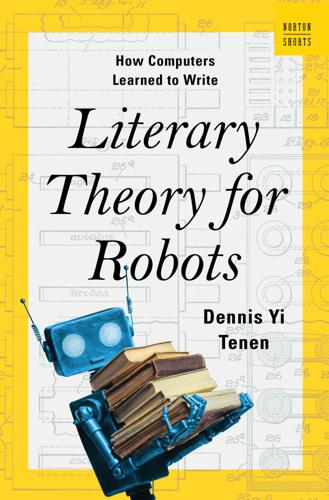
Literary Theory for Robots: How Computers Learned to Write
by
Dennis Yi Tenen
Published 6 Feb 2024
In her words, the mechanism “combines together general symbols, in successions of unlimited variety and extent,” establishing “a uniting link between the operations of matter and the abstract mental processes of the most abstract branch of mathematical science.” In one the most lyrical passages of her commentary Lovelace wrote, “The Analytical Engine weaves algebraic patterns just as the Jacquard-loom weaves flowers and leaves.” Let’s unpack that a bit. Remember, the misalignment between language and the world plagued our universal machines in the last chapter. When discussing “trees” for example, we usually assume the same physical referent (the actual tree). But in some cases, my idea of “trees” represents something other than what you may have had in mind.
…
There’d be no need for calculators if we were all mathematical geniuses. AI was created specifically to make us smarter. Spell-checkers and sentence autocompletion tools make better (at least, more literate) writers. In considering the amplification of average human capacity for thought, both Babbage and Lovelace circled around the idea of the Jacquard loom, an innovation in weaving manufacture that used perforated “operation cards” to pattern its designs. Within the gears of the Analytical Engine, which Lovelace called “the mill,” an operation card would rearrange or “throw” the mechanism “into a series of different states,” “determining the succession of operation in a general manner.”
…
Reading it has significantly changed my perspective on the Analytical Engine. Where at first I saw it in the lineage of thought-manipulating machines, via Kircher and Leibniz, I could now also perceive its ambition on the scale of macroeconomics, in the broader context of the industrial age. The Analytical Engine was to achieve for the world of letters what the Jacquard loom has done for the commercial weaving of fabrics. This was no mere metaphor for Babbage. Nor was it solely his invention. From the nineteenth century onward, the notion of template-based manufacturing permeated all human industry, and especially the manufacture of consumer and capital goods, like clothing, furniture, machinery, or equipment.
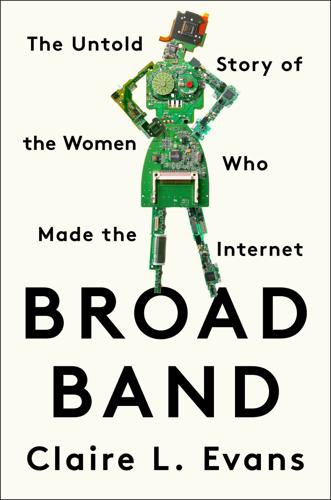
Broad Band: The Untold Story of the Women Who Made the Internet
by
Claire L. Evans
Published 6 Mar 2018
Patterns encoded on paper, which computer scientists later called “programs,” could meaningfully entangle numbers as easily as thread. The Jacquard loom put skilled laborers, male and female, out of work. Some took out their anger on the frames of the new machines, claiming as a folk hero the apocryphal Ned Ludd, a weaver said to have smashed a pair of stocking-frames at the end of the previous century. We use the term Luddite now in the pejorative, to describe anyone with an unreasonable aversion to technology, but the cause was not unpopular in its time. Even Lord Byron sympathized. In his maiden speech to the House of Lords in 1812, he defended the organized framebreakers by comparing the results of a Jacquard loom’s mechanical weaving to “spider-work.”
…
Even as Byron made his case, Jacquard looms were producing a quality and volume of textiles unlike anything the world had ever seen. The mathematician Charles Babbage owned a portrait of Joseph-Marie Jacquard woven from thousands of silk threads using twenty-four thousand punched cards, a weaving so intricate that it was regularly mistaken for an engraving by his guests. And although the portrait was a fine possession, it was the loom itself, and its punch card programs, that really ignited Babbage’s imagination. “It is a known fact,” Babbage proclaimed, “that the Jacquard loom is capable of weaving any design which the imagination of man may conceive.”
…
As long as that imagination could be translated into a pattern, it could be infinitely reproduced, in any volume, in any material, at any level of detail, in any combination of colors, without degradation. Babbage understood the profundity of the punched-paper program because mathematical formulae work the same way: run them again and again, and they never change. He was so taken with the Jacquard loom, in fact, that he spent the better part of his life designing computing machines fed by punch cards. To describe how these worked, he even adopted the language of the textile factory, writing of a “store” to hold the numbers and a “mill” where they could be processed, analogous to a modern computer’s memory and central processing unit.
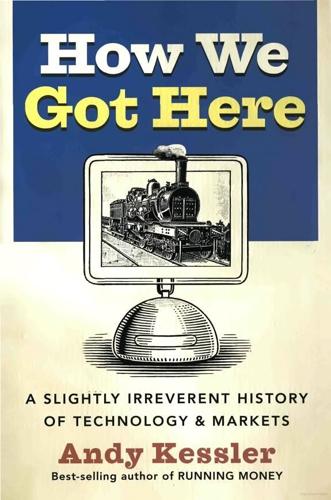
How We Got Here: A Slightly Irreverent History of Technology and Markets
by
Andy Kessler
Published 13 Jun 2005
Jacquard even figured out how to create a loop of punched cards so patterns could repeat. A Jacquard loom was destroyed in the public square in Lyon in 1806. It didn’t stop progress - by 1812, there were an amazing 18,000 Jacquard looms in France. Fashion anyone? Jacquard was awarded a lifetime pension by Napoleon and unlike anyone else in this story, Jacquard has a pattern named after him. Jacquard looms made their way to England in the 1820’s and by 1833, there were more than 100,000 working Power Looms. Surprise, surprise, not everyone was excited about this development. Disgruntled weavers in England burnt many a Jacquard loom. Others learned to shut them down by throwing a wooden shoe, known as a sabot in French, into the loom, and so became known as saboteurs.
…
Others learned to shut them down by throwing a wooden shoe, known as a sabot in French, into the loom, and so became known as saboteurs. The Jacquard looms were the first mechanical computers used for commerce, as opposed to the Pascaline for finance. The memory was punch card with holes or no holes representing binary 1’s and 0’s. The 40 HOW WE GOT HERE logic was the spring-loaded pins that depressed or lifted the warp thread. OK, no one was surfing the Web with this computer, but Jacquard set up some basic computer concepts others would build on. Punch cards? Hmm. Put that into our satchel - we might need that later, too. *** Simple arithmetic and patterns for looms are one thing, but if mathematicians wanted to do anything more, they did it by hand.
…
This was key in getting government funding. Again, a few models were demonstrated, but like his Difference Engine, the Babbage Analytic Engine never actually worked. Still, he published many papers describing how the engine POSITIVELY ELECTRIC 41 would operate if he built it. Much like the Jacquard loom, it had punch cards that contained the program and that would be fed into the Engine, which would run the program and spit out a result. This was the first idea for a stored-program computer but it would lay dormant until World War II. Babbage’s son played around with models of it late in the century that actually computed pi to 29 places; a carriage jammed while computing the 30th.

Fewer, Better Things: The Hidden Wisdom of Objects
by
Glenn Adamson
Published 6 Aug 2018
We often say this learning happens “by feel,” and the compendium of a maker’s tricks may indeed hover below the level of active consciousness. Even so, it is absolutely intrinsic to their craft. Chapter 6 TOOLING UP This gets us back to tools, for one of the very valuable things about them is the way they act as repositories of accumulated material intelligence. Once you are familiar with a fretsaw, a laser cutter, or a Jacquard loom, you will immediately recognize its effects in a finished piece of work. Furthermore, the more powerful and efficient the tool, the more it tends to determine the result. Drawings made with a computer-driven plotter more strongly reflect a predetermined aesthetic than drawings made with a pencil, not because one is digital and the other analog, but simply because the computer handles so much more of the process than the pencil does.
…
The point is often made by textile specialists that the loom was the direct historical predecessor of the computer. This is true in two senses: first, in that the earliest computer designer, the British mechanical engineer Charles Babbage, employed the same kind of punch cards in his so-called Analytical Engine as those that were used to program Jacquard looms; and second, in the more general sense that a loom, like a computer, is a machine for storing and executing very complex patterns, expressed in binary (on/off). Like any tool, but to a very advanced degree, a programmable loom is a repository for human know-how. To understand the way a loom works, it is helpful to have graph paper on hand, or at least to imagine a sheet of it.
…
More complexity can be achieved by introducing multiple colors or multiple types of fiber, each of which gets the equivalent of its own sheet of graph paper pattern in the design process. As you may appreciate, the possibility for complication becomes enormous rather quickly. This is why the Jacquard loom, named for its French inventor, Joseph Marie Jacquard, and publicly unveiled in 1801, was so important. He devised a means for storing the pattern of each pick (again, that’s each single passage of the weft thread through the textile) into a series of punch cards, chained together and fed automatically into the loom.

Wonderland: How Play Made the Modern World
by
Steven Johnson
Published 15 Nov 2016
The cards were far easier to manufacture than the metal cylinders, and they could be arranged to create an infinite number of patterns. The automated nature of Jacquard’s loom also made it more than twenty times faster than traditional drawlooms. “Using the Jacquard loom,” James Essinger writes, “it was possible for a skilled weaver to produce two feet of stunningly beautiful decorated silk fabric every day compared with the one inch of fabric per day that was the best that could be managed with the drawloom.” Joseph-Marie Jacquard displaying his loom The Jacquard loom, patented in 1804, stands today as one of the most significant innovations in the history of textile production. But its most important legacy lies in the world of computation.
…
Others take the sexual conquests: A fine overview of the arguments for the evolutionary roots of music can be found in Daniel J. Levitin’s This Is Your Brain on Music: Understanding a Human Obsession (London: Atlantic Books Ltd., 2011). “We wish to explain,” the brothers: Imad Samir, Allah’s Automata: Artifacts of the Arab-Islamic Renaissance (800-1200) (Berlin: Hatje Cantz, 2015), 68–86. “Using the Jacquard loom”: James Essinger, Jacquard’s Web: How a Hand-Loom Led to the Birth of the Information Age (New York: Oxford University Press, Kindle edition), 38. “You are aware”: Essinger, 47. When his collaborator Ada Lovelace: Quoted in Johnson, How We Got to Now: Six Innovations that Made the Modern World, 249.
…
227–30 artists as toolmakers, 175–81 Au Bonheur des Dames (Zola), 43–44 auditory illusions, 158–59, 165–66 automata clockworks, 6–7 Digesting Duck, 7, 79 flute player, 76–79 “Instrument Which Plays by Itself, The,” 73–76, 75 lifelike simulations of individual organisms, 7, 77 “Mechanical Turk,” 14 Writer, the, 7, 8 Babbage, Charles Analytic Engine, 10 Calculating Engine, 82 Difference Engine, 10, 14 On the Economy of Machinery and Manufactures, 10 inspired by Merlin’s Mechanical Museum, 9, 184, 284 interest in the technology of the Jacquard loom, 80–82 Baghdad (formerly Madinat al-Salam), 1–3 city design, 1–3 House of Wisdom (Bayt al-Hikma), 3 intellectual culture, 3–5 ball, importance of the, 210–15, 211, 212 Ballet Mécanique, 95–98 Balmat, Jacques, 263 Banu Musa, 3–5, 73–76 Banvard, John, 167, 172, 266 Barbon, Nicholas, 30 Barker, Robert, 5, 160–64, 167 baseball Cooperstown, New York, 199–200 lineage of, 199–200 Baudrillard, Jean, 273 Beethoven, Ludwig van, 166 Bellier-Beaumont, Ferréol, 129–30 Berry, Miles, 89 Birth of A Consumer Society, The (McKendrick, Brewer, and Plumb), 37 black belt, the, 33–34 Black Cat Tavern, 242–44 Black Death, 136–37 bodily humors, 134–35 bone flutes, 65–70, 66 Le Bon Marché, 41–46, 45 Book of Games of Chance, The (Cardano), 205, 207 Book of Ingenious Devices, The (Banu Masu), 3–5, 4, 73 Book of the Knowledge of Ingenious Mechanisms, The (al-Jazari), 2, 3–5 Boorstin, Daniel, 183 Boucicaut, Aristide, 40, 41–42, 48–49 Bradley, Milton, 195 Brand, Stewart, 219–20 Braudel, Fernand, 39–40 Brewer, John, 37 Brewster, David, 154–56, 156, 160 Brewster Stereoscope, 160 British East India Company, 28 British Magazine, 39 British Museum, 256–57 Brunelleschi, Filippo, 160, 175, 179 brutality of the Dutch regime Bandanese people of the Spice Islands, 119 Caribbean, 120, 120–21 Burrows, Edward G., 234 Burton, Mary, 235 “cabinet of wonders” (Wunderkammerns), 255–57, 256 caffeine as a memory enhancer, 247–48 as a natural weapon of the coffee plant, 247 calico “Calico Madams,” 28 made popular by window displays, 31 vivid colors of chintz and, 26–27, 27 capsaicin, 142 Cardano, Girolamo, 204, 205, 207–209, 222 Carlyle, Thomas, 153 casino games, 221–27 Caxton, William, 188 Cecil, William, 240 celebrities, 182–84 Cessolis, Jacobus de, 187–92, 194 chance.
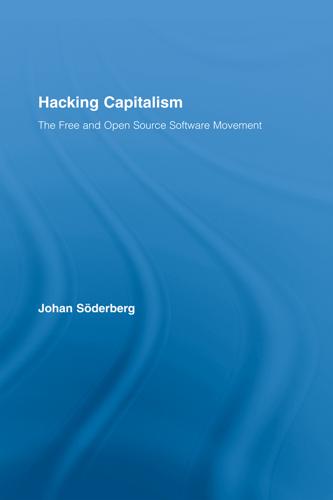
Hacking Capitalism
by
Söderberg, Johan; Söderberg, Johan;
In the future, perhaps we can do one thing today and another tomorrow, to fish in the afternoon and hack computers after dinner, without ever becoming fishermen or computer programmers. Notes Note to Introduction 1. For an account of how the Jacquard loom worked, see James Essinger, Jacquard’s Web—How a Hand Loom Led to the Birth of the Information Age (Oxford: Oxford University Press, 2004). 2. Concerning the labour issues and the Jacquard loom, see Daryl Hafter “The Programmed Brocade Loom and the Decline of the Drawgirl” in ed. Martha Moore Trescott, Dynamos and Virgins Revisited: Women and Technological Change in History (London: The Scarecrow Press, 1979). 3.
…
The book is dedicated to all of you out there who make something new and interesting with it. Introduction The rise of computing, like so many other things in the modern world, could arguably be dated to the aftermath of the French Revolution. The embryo of software programs is a system of perforated cards used in the Jacquard loom and first exhibited in 1801. Joseph-Marie Jacquard’s device was the culmination of a series of inventions made during the course of the eighteenth century in the silk-weaving district of Lyon. The principal idea which he borrowed from earlier designs was the use of perforated cards to steer the loom.
…
The presence or absence of a hole could be said to represent the binary ‘one’ and ‘zero’ of the modern computer. In this way, complex textile patterns were stored in stacks of perforated cards.1 Up until then it had required great skill of the weaver to produce luxury fabric. Not only did the weavers stand to lose their mastery in the craft, the Jacquard loom could be operated by a single weaver without the help from a drawgirl. The prospect of getting rid of the drawgirl was a strong inducement to master weavers for supporting innovations in the field.2 Hardly any family in the city of Lyon was unaffected by the invention. The weavers responded promptly by wrecking the machinery.

12 Bytes: How We Got Here. Where We Might Go Next
by
Jeanette Winterson
Published 15 Mar 2021
Whether or not this meeting with Ada inspired Babbage to go further, he began that year to put together a new kind of calculating device, which he called the Analytical Engine, and this device was the world’s first non-human computer. Even though it was never built. * * * Babbage realised that the punched-cards system used on the mechanical Jacquard loom could be used to self-operate a calculating machine. No need for a crank handle. The calculating machine could also use the punched cards to store memory. This was an extraordinary insight. * * * Punched cards are stiff cards with holes in them. The Frenchman Joseph-Marie Jacquard patented a mechanism in 1804 that allowed the pattern of a piece of cloth to be expressed as a series of holes on a card.
…
The Frenchman Joseph-Marie Jacquard patented a mechanism in 1804 that allowed the pattern of a piece of cloth to be expressed as a series of holes on a card. This was a genius moment of abstract intuition – closer to the quantum-mechanical patterned universe than the 3D realism of the Industrial Revolution. It makes sense that Babbage grasped its implications for computing. Actually, it makes no sense – it was a mental leap for both men. On a Jacquard loom, the arrangement of the holes determines the pattern. Using this system meant there was no need for a master weaver to pass the weft thread laboriously under the warp thread to weave the cloth and make the pattern. It is the order of warp and weft that sets the pattern. This is skilled but repetitive work, and, as with so many of the innovations of the Industrial Revolution, by mechanising the repetition, there was no longer any need for the same level of human skill.
…
This is skilled but repetitive work, and, as with so many of the innovations of the Industrial Revolution, by mechanising the repetition, there was no longer any need for the same level of human skill. Mechanising repetition is an engineering challenge, but engineering alone isn’t the key leap of the Jacquard loom: the leap is seeing what is solid and tangible as a series of holes (in effect, empty space) arranged as a pattern. * * * Punched cards were used in the earliest commercial tabulators, and later on in early computers. They remained in use (holes in tape), as feed-in computer programmes, until the mid-1980s.
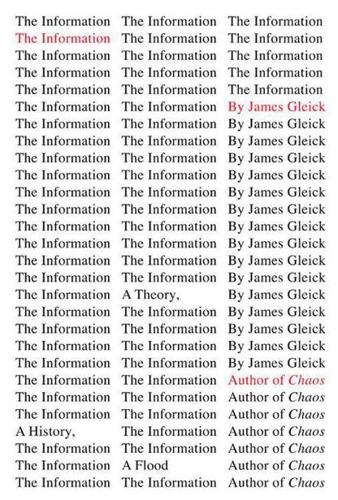
The Information: A History, a Theory, a Flood
by
James Gleick
Published 1 Mar 2011
For the admission price of a shilling, a visitor could touch the “electrical eel,” listen to lectures on the newest science, and watch a model steamboat cruising a seventy-foot trough and the Perkins steam gun emitting a spray of bullets. For a guinea, she could sit for a “daguerreotype” or “photographic” portrait, by which a faithful and pleasing likeness could be obtained in “less than One Second.”♦ Or she could watch, as young Augusta Ada Byron did, a weaver demonstrating the automated Jacquard loom, in which the patterns to be woven in cloth were encoded as holes punched into pasteboard cards. Ada was “the child of love,” her father had written, “—though born in bitterness, and nurtured in convulsion.”♦ Her father was a poet. When she was barely a month old, in 1816, the already notorious Lord Byron, twenty-seven, and the bright, wealthy, and mathematically knowledgeable Anne Isabella Milbanke (Annabella), twenty-three, separated after a year of marriage.
…
What caught Babbage’s fancy was not the weaving, but rather the encoding, from one medium to another, of patterns. The patterns would appear in damask, eventually, but first were “sent to a peculiar artist.” This specialist, as he said, punches holes in a set of pasteboard cards in such a manner that when those cards are placed in a Jacquard loom, it will then weave upon its produce the exact pattern designed by the artist.♦ The notion of abstracting information away from its physical substrate required careful emphasis. Babbage explained, for example, that the weaver might choose different threads and different colors—“but in all these cases the form of the pattern will be precisely the same.”
…
Bitter as he was about England’s waning interest in his visionary plans, Babbage found admirers on the continent, particular in Italy—“the country of Archimedes and Galileo,” as he put it to his new friends. In the summer of 1840 he gathered up his sheaves of drawings and journeyed by way of Paris and Lyon, where he watched the great Jacquard loom at Manufacture d’Étoffes pour Ameublements et Ornements d’Église, to Turin, the capital of Sardinia, for an assembly of mathematicians and engineers. There he made his first (and last) public presentation of the Analytical Engine. “The discovery of the Analytical Engine is so much in advance of my own country, and I fear even of the age,”♦ he said.
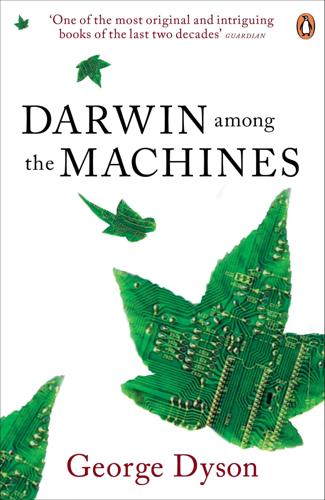
Darwin Among the Machines
by
George Dyson
Published 28 Mar 2012
Babbage began the design of the analytical engine in 1834 and was still constructing pieces of it in his own workshops when he was eighty years of age. The engine was designed to be able to manipulate its own internal storage registers while reading and writing to and from an unbounded storage medium—strings of punched pasteboard cards, adapted by Babbage from those used by the card-controlled Jacquard loom. A prototype Jacquard mechanism had been introduced in 1801; some eleven thousand Jacquard looms were in use by 1812. In specifying punched-card peripheral equipment, Babbage set a precedent that stood for 150 years. The technology was proven, available, and suited to performing complex functions on extensive data sets. (One demonstration weaving project, a silk portrait of Jacquard, required a sequence of twenty-four thousand cards.)
…
The appearance of Marquand’s “vastly more clear-headed contrivance” prompted Peirce to compose a short paper titled “Logical Machines” (1887), in which he considered “precisely how much of the business of thinking a machine could possibly be made to perform, and what part of it must be left for the living mind.”13 Despite the primitive abilities evidenced so far, Peirce advised consideration of “how to pass from such a machine as that to one corresponding to a Jacquard loom.”14 Ill at ease in more academic surroundings, Peirce spent thirty years working for the U.S. Coast Survey, where his duties included working as a (human) computer on the Nautical Almanac and conducting gravitational research. He compiled large sections of the eight-thousand-page Century Dictionary and was both physically and mentally ambidextrous, able to write out a question and its answer using both hands at the same time.
…
The 1880 census took almost seven years to completely count. If methods were not improved, the 1890 census would not be completed by the time the 1900 census began. Hollerith’s supervisor, Dr. John S. Billings, encouraged his protégé to tabulate data by means of perforated cards, citing the precedent of railway tickets but not Babbage’s engine or the Jacquard loom. Once a card was punched the data could then be read, sorted, and tabulated by machine. As a demonstration project Billings arranged for Hollerith to tabulate vital statistics for the Baltimore Department of Health. Hollerith made the most of this opportunity, although, as his mother-in-law wrote in 1889, “he is completely tired out.

The Secret War Between Downloading and Uploading: Tales of the Computer as Culture Machine
by
Peter Lunenfeld
Published 31 Mar 2011
For the 10 SECRET WAR volume is not only an exquisite nineteenth-century reinterpretation of the medieval book of hours, it is also the unknown—and unknowing—origin point for contemporary screen culture. Manufactured in Lyon by A. Roux between 1886 and 1887, this Livre de prièrs was the first and apparently only woven rather than printed book in bibliographic history.17 Manufactured on the programmable Jacquard loom that enabled French industry to dominate the market for complex textiles, the Livre de prières was so intricate that it required hundreds of thousands of punch cards to produce.18 It took A. Roux fifty tries to create the first salable version of this marvel of mixed technological metaphors, wherein Ariadne meets Gutenberg.
…
campaign, 31 Gould, Stephen Jay, 133 Graphic design, 31, 45, 64, 102, 181n7 Graphic user interface, 161 Great Depression, 107 Great Wall of China, 75 Greek myths, 75, 175 Greenwich Village, 84–85 Grey Album, The (Danger Mouse), 54–55 Gropius, Walter, 36 Guardian syndrome, 85–86 Guggenheim Bilbao, 39 Gulags, 107 Gutenberg press, 11, 137–138 Gysin, Brion, 52 Habits of mind, 9–10 Hackers, 22–23, 54, 67, 69, 162, 170–173 Hartmann, Frank, 125 Harvard Business Review, 112 Harvard Crimson, 36 Hasids, 135 Headline News (CNN), 58 Heidegger, Martin, 29 Heisenberg, Werner, 37 Hello Kitty, 90 Hewlett, Bill, 145, 157 Hewlett-Packard (HP), 149, 153, 172 Hierarchies cultural, 1, 24, 29, 93, 114 technical, 123, 155, 175–176, 189n8 High fructose corn syrup (HFCS), 4, 7–9, 181n6 Hindus, 135 Hip-hop, 53–54, 61 Hirai, Kazumasa, 108 Hiroshima, 100–101 Hitchcock, Alfred, 44 Holocaust, 107 Homebrew Computer Club, 163 Homer, 28, 93–95 Hope (campaign poster), 31 Hosts Berners-Lee and, 144, 167–169, 175 description of term, xv Stallman and, 170–171 Torvalds and, 144, 167–173 World Wide Web and, xv “House of Cards” (Radiohead), 39 Howe, Jeff, 189n14 Hustlers, 156 description of term, xv desktops and, xv Gates and, 144, 162–166, 196n21 Jobs and, 144, 162–167, 186n12, 196n21 Hypercontexts, xvi, 7, 48, 76–77 Hyperlinking, 52–53, 57, 150 205 INDEX Hypertextuality, 51–53, 108, 145, 150, 158, 166, 168 IBM, 145, 170, 195n11 as Big Blue, 156, 164 Gates and, 164–165 650 series and, 154–155 System/360 series and, 155 Watsons and, 144, 153–157, 165–166 Iliad (Homer), 28 I Love Lucy (TV show), 47 India, 135 Individualism, 13, 98 Information, 98 algorithms and, 46, 144, 174–177 bespoke futures and, 100–101, 124– 126, 190n8, 193n34 culture machine and, 143–149, 152– 153, 163, 167–168, 172, 176–178, 196n17, 197n29 downloading/uploading and, 1, 4, 11 Gutenberg press and, 11, 137, 138 mashing and, 25, 54–55, 57, 74 Neurath and, 125 overload of, 81 peer-to-peer networks and, 15, 54, 92, 116, 126 Shannon and, 148 stickiness and, 22–23, 32–35, 184n15 storage and, 47, 60, 153, 196n17 unimodernism and, 45–49, 55, 60, 65–66, 74 Web n.0 and, 80–81, 92 World War II and, 146–147 Information overload, 22, 149 Info-triage, xvi, 20–23, 121, 132, 143 Infoviz, 58 Intel, 149, 156 Intellectual property copyright and, 54, 88–95, 123, 164, 166, 173, 177 Mickey Mouse Protection Act and, 90 public domain and, 91 Interactive environments, xiv, 24, 39, 57, 69, 71, 83, 114–119, 126 Intergalactic Computer Network, 108, 152, 168 International System of Typographic Picture Education, 125 Internet, xiii, 180n1, 184n15 AOL television and, 9 development of computer and, 145, 168–171, 174 stickiness and, 15, 22, 27, 30 unimodernism and, 56 viral distribution and, 30, 56, 169 Web n.0 and, 79, 83, 92 Interpretation of Dreams (Freud), 43–44 Interventionism, 14, 41, 126, 190n8 IOD, 39 IPad, 167 IPhone, 15, 167 Iraq, 100 Islam, 134 Isotypes, 44, 125, 193n34 Israeli settler movement, 135 ITunes, 167 Jackson, Samuel L., 30 Jacobs, Jane, 84–86 Jacquard loom, 11 James, William, 128 Japanese art, xi, 49 Jay Z, 55 Jazz, 25–27, 160 Jevbratt, Lisa, 39 Jobs, Steve, 144, 162–167, 186n12, 196n21 Joyce, James, 94–95 Junk culture, 5–10 Kael, Pauline, 135 Kawai art, xi Kay, Alan, 144, 157, 160–167, 195n16, 206 INDEX as patriarch, 144, 147–148, 151–152, 163, 168 personal computers and, 152 symbiosis and, 151–152 vision of participation by, 151–152 Life hacking, 22 Lincoln Center, 85 Linnaeus, Carolus, 80 Linux, 75, 169–173, 197n27 Livre de prières tissé’ d’apres les enlumineurs des manuscrits du XIVe au XVIe siècle (Roux), 10–11 London, 25–26, 100, 130 Looking Backward (Bellamy), 108 Lorenz, Edward, 117–118 Los Angeles: The Architecture of Four Ecologies (Banham), 10 Lost (TV show), 181n8 Love letter generator, 18–19 Lucky Jim (Amis), 32 Luhrmann, Baz, 60–63 Lynn, Greg, 64 Kay, Alan (continued) 196n17 Kennedy, John F., xi Kino-eye, 44 Kiss (band), 63 “Kitch’s Bebop Calypso” (song), 25–27 Koblin, Aaron, 39 Kodak, 15 Koolhaas, Rem, 49 Koran, 28 Kraus, Karl, 66, 75 Krikalev, Sergei K., 50–51 Kubrick, Stanley, 107 Kuwata, Jiro, 108 Langer, Ellen J., 183n6 Language bespoke futures and, 126, 135 calypso and, 25 hypertextuality and, 51–53, 108, 145, 150, 158, 166, 168 Joyce and, 94 mass culture and, 31 PostScript and, 55–56 Larrey, Dominique Jean, 21 Larson, Jonathan, 61 Latour, Bruno, 130, 185n19 Leary, Timothy, 145 Le Corbusier, 44 Léger, Fernand, 45 Legibility wars, 31 Lehmann, Chris, 184n16 Leibniz, Gottfried, 149 Let Us Now Praise Famous Men (Agee and Burroughs), 40–41 Levine, Sherrie, 41 Libertarianism, 13, 98 Library of Congress, 89 Licensing, 164–165 Licklider, J.C.R.
…
, 71 Spielraum (play space), 75 Spin, 124 Stallman, Richard, 170–171 Stanford, 144, 149, 158–159, 162, 175 Stardust@home, 122–123 Stardust Interstellar Dust Collector (SIDC), 193n33 Sterling, Bruce, 101–102 Stewart, Jimmy, 44 Stickiness defining, 28, 184n15 downloading and, 13–17, 20–23, 27–29, 184n15 duration and, 28 fan culture and, 28–32, 48, 49, 87 gaming and, 70–74 214 INDEX Systems theory, 151 Stickiness (continued) information and, 22–23, 32–35 markets and, 13, 16, 24, 30–33, 37 modernism and, 36 networks and, 16–17, 22, 24, 29–36 obsessiveness and, 28 play and, 32–34, 70–74 power and, 32–34 simulation and, 15–19, 27, 32, 35 Teflon objects and, 28–32, 49, 87 toggling and, 33–34, 43, 102, 197n30 tweaking and, xvi, 32–35, 185nn22,23 unfinish and, 34–37, 76–77 unimodernism and, 70–74 uploading and, 13–17, 20, 23–24, 27–29 Web n.0 and, 79, 87 Stock options, 98 Stone, Linda, 34 Storage, 47, 60, 153, 196n17 Strachey, Christopher, 18–19 Strachey, Lytton, 19 Strange attractors, xvi, 117–120, 192n27 Sturges, Preston, 88 Stutzman, Fred, 22 Stewart, Martha, 49 Suburbs, 3, 8 Suicide bombers, 100–101 Sullivan’s Travels (Sturges), 88 Sun Microsystems, 172, 176 Superflat art, xi, 49 Supersizing, 3–4 Suprematism, 117 Surfing, 20, 80, 180n2 Surrealism, 31 Sutherland, Ivan, 160–161 Swiss Army Knife theory, 17 Symbiosis, 151–152 Synthetism, 117 Systems of Survival: A Dialogue on the Moral Foundations of Commerce and Politics (Jacobs), 85–86 Take-home consumption, 3 Tarantino, Quentin, 49 Taxonomies, 80–83 Technology analog, 18, 53, 150 anticipated, 108–110 bespoke futures and, 98–104, 107–113, 116, 119, 125–127, 131– 133, 136–139 broadband, 9, 57 cell phones, xiii, xvii, 17, 23, 42, 53, 56, 76, 101 commercial networks and, 4–5 compact discs (CDs), 2, 48, 53 computer mouse, 158–159 culture machine and, 143–163, 173–174 cyberpunk maxim on, 87 determinism and, 131–132 difference engine, 149 digital video discs (DVDs), 2, 7–8, 15, 58 dot-com bubble and, 79, 174 Dynabook, 161–162, 196n17 Ethernet, 161 Exhibition of the Achievement of the Soviet People’s Economy (VDNX) and, 102–105 film cameras, 15 Gutenberg press, 11, 137–138 hierarchical structures and, 123, 155, 175–176, 189n8 historical perspective on computer, 143–178 hypertext and, 158 information overload and, 22, 149 Jacquard loom, 11 mechanical calculator, 149 Metcalfe’s corollary and, 86–87 microfilm, 149–150 215 INDEX Technology (continued) Moore’s law and, 156, 195n13 New Economy and, 97, 99, 104, 131, 138, 144–145, 190n3 personal digital assistants (PDAs), 17 Photoshop, 131 progress and, 132 RFID, 65 secular culture and, 133–139 storage, 47, 60, 153, 196n17 technofabulism and, 99–100 teleconferencing, 158–159 3–D tracking, 39 tweaking and, 32–35, 185nn22,23 videocassette recorders (VCRs), 15, 23 wants vs. needs and, 4 woven books, 10–11 Teflon objects, 28–32, 49, 87 Teleconferencing, 158–159 Television as defining Western culture, 2 aversion to, xii bespoke futures and, 101, 108, 124, 127–129, 133–137 delivery methods for, 2 dominance of, xii, 2–10 downloading and, 2 as drug, xii, 7–9 general audiences and, 8–9 habits of mind and, 9–10 Internet, 9 junk culture and, 5–10 Kennedy and, xi macro, 56–60 marketing fear and, xvii overusage of, 7–9 as pedagogical boon, 14 quality shows and, 7 rejuveniles and, 67 Slow Food and, 6–7 spin-offs and, 48 as time filler, 67 U.S. ownership data on, 180n2 Telnet, 169 “Ten Tips for Successful Scenarios” (Schwartz and Ogilvy), 113 Terrorism, 99–101, 130–131, 134, 137 Textiles, 11 Text-messaging, 82 3COM, 86 3–D tracking, 39 Tiananmen Square, 104 Timecode (Figgis), 58 Time magazine, xii, 145 Time Warner, 63, 91 Tin Pan Alley, 28, 63 Tintin, 90 Toggling, xvi, 33–34, 43, 102, 197n30 Tools for Thought (Rheingold), 145 Torvalds, Linus, 144, 167–173 Tracy, Dick, 108 Traitorous Eight, 156 Trilling, Lionel, 79 Turing, Alan, 17–20, 52, 148 Turing Award, 17, 156 Tweaking, xvi, 32–35, 185nn22,23 20,000 Leagues beneath the Sea (Verne), 108 Twins paradox, 49–50 Twitter, 34, 180n2 2001 (film), 107 Ubiquity, xiii bespoke futures and, 125, 128 culture machine and, 144, 166, 177–178 folksonomies and, 80–81 Freedom software and, 22–23 hotspots and, xiv information overload and, 22, 149 isotypes and, 125 stickiness and, 22–23 unimodernism and, 39, 53, 57–59, 62, 74 216 INDEX simulation and, 39, 49, 53–54, 57, 71–76 soundscape and, 53–55 stickiness and, 70–74 twins paradox and, 49–50 unconscious and, 43–44 unfinish and, 51, 67, 70, 76–78 unimedia and, 39–40 uploading and, 42, 49, 53, 57, 67, 77 WYMIWYM (What You Model Is What You Manufacture) and, 64–67 WYSIWYG (What You See Is What You Get) and, 55–56, 64–65 United States Cuban Missile Crisis and, xi September 11, 2001 and, 99–101, 130 television’s dominance and, 2, 180n2 Universal Resource Locator (URL), 168–169 Universal Turing Machine, 18–19 University of Pennsylvania, 148 University of Utah, 160 UNIX, 170–171 “Untitled (After Walker Evans)” (Levine), 41 Uploading, xiii–xiv, 180nn1,2 activity levels and, 5 animal kingdom and, 1 bespoke futures and, 97, 120–123, 128–129, 132 commercial networks and, 4–5 communication devices and, 15–16 conversation and, 13 cultural hierarchy of, 1–2 culture machine and, 143, 168, 173, 175 disproportionate amount of to downloading, 13 humans and, 1–2 information and, 1, 4, 11 meaningfulness and, xvi, 29 stickiness and, 13–17, 20, 23–24, 27–29 Ubiquity (continued) Web n.0 and, 79–95 Ublopia, 101 Ulysses (Joyce), 94–95 Uncertainty principle, 37 Unfinish, xvi bespoke futures and, 127–129, 136 continuous partical attention and, 34 perpetual beta and, 36 stickiness and, 34–37, 76–77 unimodernism and, 51, 67, 70, 76–78 Web n.0 and, 79, 92 Unimedia, 39–40 Unimodernism Burroughs and, 40–42 common sense and, 44–45 DIY movements and, 67–70 downloading and, 41–42, 49, 54–57, 66–67, 76–77 figure/ground and, 42–43, 46 gaming and, 70–74 hypertextuality and, 51–53 images and, 55–56 information and, 45–49, 55, 60, 65–66, 74 Krikalev and, 50–51 macrotelevision and, 56–60 markets and, 45, 48, 58–59, 71, 75 mashing and, 25, 54–55, 57, 74 mechanization and, 44–45 microcinema and, 56–60 modders and, 69–70 Moulin Rouge and, 60–63 narrative and, 58–59, 67, 71, 76 networks and, 39, 47–48, 54–57, 60, 64–65, 68–69, 73–74 participation and, 54, 66–67, 74–77 perception pops and, 43–49 play and, 67–77 postmodernism and, 39–41, 74 remixing and, 39, 53–54, 62–63, 70 running room and, 74–77 217 INDEX Uploading (continued) unimodernism and, 42, 49, 53, 57, 67, 77 Web n.0 and, 79–83, 86–87, 91 Urban planning, 84–86 U.S.

Computer: A History of the Information Machine
by
Martin Campbell-Kelly
and
Nathan Ensmenger
Published 29 Jul 2013
Thus, even as he wrestled with the complexities of the Analytical Engine, Babbage the economist was never far below the surface. For about two years Babbage struggled with the problem of organizing the calculation—the process we now call programming, but for which Babbage had no word. After toying with various mechanisms, such as the pegged cylinders of barrel organs, he hit upon the Jacquard loom. Invented in 1802, the Jacquard loom had started to come into use in the English weaving and ribbon-making industries in the 1820s. It was a general-purpose device that, when instructed by specially punched cards, could weave infinite varieties of pattern. Babbage envisaged just such an arrangement for his Analytical Engine.
…
Lovelace had a poetic turn of phrase, which Babbage never had, and this enabled her to evoke some of the mystery of the Analytical Engine that must have appeared truly remarkable to the Victorian mind: The distinctive characteristic of the Analytical Engine, and that which has rendered it possible to endow mechanism with such extensive faculties as bid fair to make this engine the executive right hand of abstract algebra, is the introduction into it of the principle which Jacquard devised for regulating, by means of punched cards, the most complicated patterns in the fabrication of brocaded stuffs. . . . We may say most aptly that the Analytical Engine weaves algebraical patterns just as the Jacquard loom weaves flowers and leaves. This image of weaving mathematics was an appealing metaphor among the first computer programmers in the 1940s and 1950s. One should note, however, that the extent of Lovelace’s intellectual contribution to the Sketch has been much exaggerated. She has been pronounced the world’s first programmer and even had a programming language (Ada) named in her honor.
…
memex as predecessor to, 200 (photo), 278–279, 293 Minitel and, 196 (photo), 269–271 mobile computing, 296–299 privacy issues, 302, 305 privatization of, 291–296 regulation of, 304–305 role in political change, 303–305 social networking, 300–305 See also World Wide Web Internet Explorer, 290–291 Internet service provider (ISP), 290 Iowa State University, 68–70, 79 IT programming language, 174 Jacquard loom, 43, 44, 56 Jenner, Edward, 286 Jobs, Steve Apple Computer co-founded by, 238–241, 249, 251 computer liberation movement and, 234 consumer electronics and, 297–298 Macintosh development and, 261–263 personal computer development and, 229 Kahn, Herman, 137 Kay, Alan, 259, 260, 296 Kemeny, John, 192 (photo), 205–206 Keyboards, 22, 23 Kilburn, Tom, 93 (photo) Kildall, Gary, 246, 264–265, 267–268 Kurtz, Thomas E., 192 (photo), 205–206 Lake, Claire D., 57 Laplace, Pierre-Simon, 5 Laptop computers, 296, 298 Lardner, Dionysius, 45 LCD screens, 296 Learson, T.

The Innovators: How a Group of Inventors, Hackers, Geniuses and Geeks Created the Digital Revolution
by
Walter Isaacson
Published 6 Oct 2014
One would be in charge of adding 2 to the last number in column B, and then would hand that result to another person, who would add that result to the last number in column A, thus generating the next number in the sequence of squares. Replica of the Difference Engine. Replica of the Analytical Engine. The Jacquard loom. Silk portrait of Joseph-Marie Jacquard (1752–1834) woven by a Jacquard loom. Babbage devised a way to mechanize this process, and he named it the Difference Engine. It could tabulate any polynomial function and provide a digital method for approximating the solution to differential equations. How did it work? The Difference Engine used vertical shafts with disks that could be turned to any numeral.
…
In enabling a mechanism to combine together general symbols, in successions of unlimited variety and extent, a uniting link is established between the operations of matter and the abstract mental processes.37 Those sentences are somewhat clotted, but they are worth reading carefully. They describe the essence of modern computers. And Ada enlivened the concept with poetic flourishes. “The Analytical Engine weaves algebraical patterns just as the Jacquard loom weaves flowers and leaves,” she wrote. When Babbage read “Note A,” he was thrilled and made no changes. “Pray do not alter it,” he said.38 Ada’s second noteworthy concept sprang from this description of a general-purpose machine. Its operations, she realized, did not need to be limited to math and numbers.
…
“Simple things should be simple, complex things should be possible,” he declared.62 Kay wrote a description of the Dynabook, titled “A Personal Computer for Children of All Ages,” that was partly a product proposal but mostly a manifesto. He began by quoting Ada Lovelace’s seminal insight about how computers could be used for creative tasks: “The Analytical Engine weaves algebraical patterns just as the Jacquard loom weaves flowers and leaves.” In describing how children (of all ages) would use a Dynabook, Kay showed he was in the camp of those who saw personal computers primarily as tools for individual creativity rather than as networked terminals for collaboration. “Although it can be used to communicate with others through the ‘knowledge utilities’ of the future such as a school ‘library,’ ” he wrote, “we think that a large fraction of its use will involve reflexive communication of the owner with himself through this personal medium, much as paper and notebooks are currently used.”
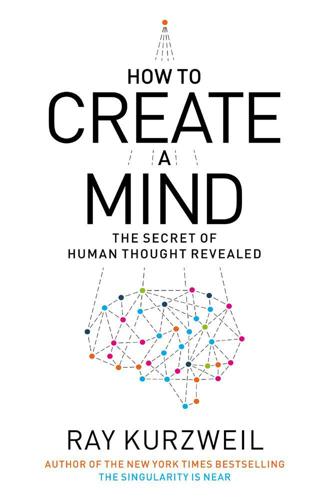
How to Create a Mind: The Secret of Human Thought Revealed
by
Ray Kurzweil
Published 13 Nov 2012
There is actually one genuine forerunner to von Neumann’s concept, and it comes from a full century earlier! English mathematician and inventor Charles Babbage’s (1791–1871) Analytical Engine, which he first described in 1837, did incorporate von Neumann’s ideas and featured a stored program via punched cards borrowed from the Jacquard loom.4 Its random access memory included 1,000 words of 50 decimal digits each (the equivalent of about 21 kilobytes). Each instruction included an op code and an operand number, just like modern machine languages. It did include conditional branching and looping, so it was a true von Neumann machine.
…
She wrote programs for the Analytical Engine, which she needed to debug in her own mind (since the computer never worked), a practice well known to software engineers today as “table checking.” She translated an article by the Italian mathematician Luigi Menabrea on the Analytical Engine and added extensive notes of her own, writing that “the Analytical Engine weaves algebraic patterns, just as the Jacquard loom weaves flowers and leaves.” She went on to provide perhaps the first speculations on the feasibility of artificial intelligence, but concluded that the Analytical Engine has “no pretensions whatever to originate anything.” Babbage’s conception is quite miraculous when you consider the era in which he lived and worked.
…
J., 75 frontal lobe, 36, 41, 77 fusiform gyrus, 89, 95, 111 gambling, 106 ganglion cells, 95 García Márquez, Gabriel, 3–4, 283n–85n Gazzaniga, Michael, 226–29, 234 General Electric, 149 genetic (evolutionary) algorithms, see evolutionary (genetic) algorithms genome, human, 4, 103, 251 design information encoded in, 90, 147, 155, 271, 314n–15n redundancy in, 271, 314n, 315n sequencing of, LOAR and, 252, 252, 253 see also DNA George, Dileep, 41, 73, 156 Ginet, Carl, 234 God, concept of, 223 Gödel, Kurt, 187 incompleteness theorem of, 187, 207–8 “God parameters,” 147 Good, Irvin J., 280–81 Google, 279 self-driving cars of, 7, 159, 261, 274 Google Translate, 163 Google Voice Search, 72, 161 Greaves, Mark, 266–72 Grossman, Terry, 287n–88n Grötschel, Martin, 269 Hameroff, Stuart, 206, 208, 274 Hameroff-Penrose thesis, 208–9 Hamlet (Shakespeare), 209 Harnad, Stevan, 266 Harry Potter and the Half-Blood Prince (Rowling), 117 Harry Potter and the Prisoner of Azkaban (Rowling), 121 Hasson, Uri, 86 Havemann, Joel, 25 Hawkins, Jeff, 41, 73, 156 Hebb, Donald O., 79–80 Hebbian learning, 80 hemispherectomy, 225 hidden Markov models (HMMs), 68, 141–44, 143, 145, 147, 162 hierarchical hidden Markov models (HHMMs), 51, 68, 72, 74, 144–46, 149–50, 152–53, 155, 156, 162, 164, 167–68, 195, 269, 270 pruning of unused connections by, 144, 147, 155 hierarchical learning, 164, 195, 197 hierarchical memory: digital, 156–57 temporal, 73 hierarchical systems, 4, 35 hierarchical thinking, 8, 69, 105, 117, 153–54, 177, 233, 286n bidirectional flow of information in, 52 language and, 56, 159, 162, 163 in mammalian brain, 2–3 pattern recognition as, 33, 41–53 recursion in, 3, 7–8, 56, 65, 91, 109, 156, 177 routine tasks and, 32–33 as survival mechanism, 79 as unique to mammalian brain, 35 hippocampus, 63, 77, 101–2 Hitchhiker’s Guide to the Galaxy, The (Adams), 161 Hobbes, Thomas, 278 Hock, Dee, 113 Horwitz, B., 75 Hubel, David H., 34 Human Connectome Project, 129 human genome, see genome, human Human Genome Project, 251, 273 humans: merger of intelligent technology with, 266–72, 276, 279–82 tool-making ability of, 3, 27, 276, 279 Hume, David, 234–35 IBM, 6–7, 108, 128, 165–66 Cognitive Computing Group of, 195 ideas, recursive linking of, 3 identity, 10, 11, 240–47 as pattern continuity, 246, 247 thought experiments on, 242–47 importance parameters, 42, 60, 66, 67 incompatibilism, 234, 236 incompleteness, Gödel’s theorem of, 187, 207–8 inference engines, 162–63 information, encoding of: in DNA, 2, 17, 122 evolution and, 2 in human genome, 90, 147, 155, 271, 314n–15n information structures, carbon-based, 2 information technologies: exponential growth of, 278–79 LOAR and, 4, 249–57, 252, 257, 258, 259, 260, 261, 261 inhibitory signals, 42, 52–53, 67, 85, 91, 100, 173 insula, 99–100, 99, 110 integrated circuits, 85 Intel, 268 intelligence, 1–2 emotional, 110, 194, 201, 213 as evolutionary goal, 76–78, 277, 278 evolution of, 177 as problem-solving ability, 277 International Dictionary of Psychology (Sutherland), 211 “International Technology Roadmap for Semiconductors,” 268 Internet, exponential growth of, 254 Interpretation of Dreams, The (Freud), 66 intuition, linear nature of, 266 invariance, in pattern recognition, 30, 59–61, 133, 135, 137, 175 and computer emulation of brain, 197 one-dimensional representations of data and, 141–42 vector quantization and, 141 inventors, timing and, 253, 255 I, Robot (film), 210 Jacquard loom, 189, 190 James, William, 75–76, 98–99 Jeffers, Susan, 104 Jennings, Ken, 157–58, 165 Jeopardy! (TV show), 6–7, 108, 157–58, 160, 165, 166, 167, 168, 169, 172, 178, 232–33, 270 Joyce, James, 55 Kasparov, Garry, 39, 166 K Computer, 196 knowledge bases: AI systems and, 4, 6–7, 170–71, 246, 247 of digital neocortex, 177 exponential growth of, 3 as inherently hierarchical, 220 language and, 3 professional, 39–40 as recursively linked ideas, 3 Kodandaramaiah, Suhasa, 126 Koene, Randal, 89 Koltsov, Nikolai, 16 Kotler, Steven, 278 KurzweilAI.net, 161 Kurzweil Applied Intelligence, 144 Kurzweil Computer Products, 122 Kurzweil Voice, 160 lamina 1 neurons, 97 language: chimpanzees and, 3, 41 and growth of knowledge base, 3 hierarchical nature of, 56, 159, 162, 163 as metaphor, 115 as translation of thinking, 56, 68 language software, 51, 72–73, 92, 115–16, 122–23, 144–45, 145, 156, 157–72, 174, 270 expert managers in, 166–67 hand-coded rules in, 164–65, 166, 168 HHMMs in, 167–68 hierarchical systems in, 162–65 Larson, Gary, 277 “Last Voyage of the Ghost, The” (García Márquez), 3–4 lateral geniculate nucleus, 95, 100 law of accelerating returns (LOAR), 4, 6, 7, 41, 123 as applied to human brain, 261–63, 263, 264, 265 biomedicine and, 251, 252, 253 communication technology and, 253, 254 computation capacity and, 281, 316n–19n information technology and, 4, 249–57, 252, 257, 258, 259, 260, 261, 261 objections to, 266–82 predictions based on, 256–57, 257, 258, 259, 260, 261 and unlikelihood of other intelligent species, 5 “Law of Accelerating Returns, The” (Kurzweil), 267 laws of thermodynamics, 37, 267 learning, 61–65, 122, 155, 273–74 conditionals in, 65 and difficulty of grasping more than one conceptual level at a time, 65 in digital neocortex, 127–28, 175–76 environment and, 119 Hebbian, 80 hierarchical, 164, 195, 197 in neural nets, 132–33 neurological basis of, 79–80 pattern recognition as basic unit of, 80–81 of patterns, 63–64, 90 recognition as simultaneous with, 63 simultaneous processing in, 63, 146 legal systems, consciousness as basis of, 212–13 Leibniz, Gottfried Wilhelm, 34, 223 Lenat, Douglas, 162 Leviathan (Hobbes), 278 Lewis, Al, 93 Libet, Benjamin, 229–30, 231, 234 light, speed of, 281 Einstein’s thought experiments on, 18–23 linear programming, 64 LISP (LISt Processor), 153–55, 163 pattern recognition modules compared with, 154, 155 Lloyd, Seth, 316n, 317n Loebner, Hugh, 298n Loebner Prize, 298n logic, 38–39 logical positivism, 220 logic gates, 185 Lois, George, 113 love, 117–20 biochemical changes associated with, 118–19 evolutionary goals and, 119 pattern recognition modules and, 119–20 “Love Is the Drug,” 118 Lovelace, Ada Byron, Countess of, 190, 191 lucid dreaming, 72, 287n–88n Lyell, Charles, 14–15, 114, 177 McCarthy, John, 153 McClelland, Shearwood, 225 McGinn, Colin, 200 magnetic data storage, growth in, 261, 301n–3n magnetoencephalography, 129 Manchester Small-Scale Experimental Machine, 189 Mandelbrot set, 10–11, 10 Marconi, Guglielmo, 253 Mark 1 Perceptron, 131–32, 134, 135, 189 Markov, Andrei Andreyevich, 143 Markram, Henry, 80–82, 124–27, 129 mass equivalent, of energy, 22–23 Mathematica, 171 “Mathematical Theory of Communication, A” (Shannon), 184 Mauchly, John, 189 Maudsley, Henry, 224 Maxwell, James Clerk, 20 Maxwell, Robert, 225 Mead, Carver, 194–95 medial geniculate nucleus, 97, 100 medicine, AI and, 6–7, 39, 108, 156, 160–61, 168 memes: consciousness as, 211, 235 free will as, 235 memory, in computers, 185, 259, 260, 268, 301n–3n, 306n–7n memory, memories, human: abstract concepts in, 58–59 capacity of, 192–93 computers as extensions of, 169 consciousness vs., 28–29, 206–7, 217 dimming of, 29, 59 hippocampus and, 101–2 as ordered sequences of patterns, 27–29, 54 redundancy of, 59 unexpected recall of, 31–32, 54, 68–69 working, 101 Menabrea, Luigi, 190 metacognition, 200, 201 metaphors, 14–15, 113–17, 176–77 Michelson, Albert, 18, 19, 36, 114 Michelson-Morley experiment, 19, 36, 114 microtubules, 206, 207, 208, 274 Miescher, Friedrich, 16 mind, 11 pattern recognition theory of (PRTM), 5–6, 8, 11, 34–74, 79, 80, 86, 92, 111, 172, 217 thought experiments on, 199–247 mind-body problem, 221 Minsky, Marvin, 62, 133–35, 134, 199, 228 MIT Artificial Intelligence Laboratory, 134 MIT Picower Institute for Learning and Memory, 101 MobilEye, 159 modeling, complexity and, 37–38 Modha, Dharmendra, 128, 195, 271–72 momentum, 20–21 conservation of, 21–22 Money, John William, 118, 119 montane vole, 119 mood, regulation of, 106 Moore, Gordon, 251 Moore’s law, 251, 255, 268 moral intelligence, 201 moral systems, consciousness as basis of, 212–13 Moravec, Hans, 196 Morley, Edward, 18, 19, 36, 114 Moskovitz, Dustin, 156 motor cortex, 36, 99 motor nerves, 99 Mountcastle, Vernon, 36, 37, 94 Mozart, Leopold, 111 Mozart, Wolfgang Amadeus, 111, 112 MRI (magnetic resonance imaging), 129 spatial resolution of, 262–65, 263, 309n MT (V5) visual cortex region, 83, 95 Muckli, Lars, 225 music, as universal to human culture, 62 mutations, simulated, 148 names, recalling, 32 National Institutes of Health, 129 natural selection, 76 geologic process as metaphor for, 14–15, 114, 177 see also evolution Nature, 94 nematode nervous system, simulation of, 124 neocortex, 3, 7, 77, 78 AI reverse-engineering of, see neocortex, digital bidirectional flow of information in, 85–86, 91 evolution of, 35–36 expansion of, through AI, 172, 266–72, 276 expansion of, through collaboration, 116 hierarchical order of, 41–53 learning process of, see learning linear organization of, 250 as metaphor machine, 113 neural leakage in, 150–51 old brain as modulated by, 93–94, 105, 108 one-dimensional representations of multidimensional data in, 53, 66, 91, 141–42 pattern recognition in, see pattern recognition pattern recognizers in, see pattern recognition modules plasticity of, see brain plasticity prediction by, 50–51, 52, 58, 60, 66–67, 250 PRTM as basic algorithm of, 6 pruning of unused connections in, 83, 90, 143, 174 redundancy in, 9, 224 regular grid structure of, 82–83, 84, 85, 129, 262 sensory input in, 58, 60 simultaneous processing of information in, 193 specific types of patterns associated with regions of, 86–87, 89–90, 91, 111, 152 structural simplicity of, 11 structural uniformity of, 36–37 structure of, 35–37, 38, 75–92 as survival mechanism, 79, 250 thalamus as gateway to, 100–101 total capacity of, 40, 280 total number of neurons in, 230 unconscious activity in, 228, 231, 233 unified model of, 24, 34–74 as unique to mammalian brain, 93, 286n universal processing algorithm of, 86, 88, 90–91, 152, 272 see also cerebral cortex neocortex, digital, 6–8, 41, 116–17, 121–78, 195 benefits of, 123–24, 247 bidirectional flow of information in, 173 as capable of being copied, 247 critical thinking module for, 176, 197 as extension of human brain, 172, 276 HHMMs in, 174–75 hierarchical structure of, 173 knowledge bases of, 177 learning in, 127–28, 175–76 metaphor search module in, 176–77 moral education of, 177–78 pattern redundancy in, 175 simultaneous searching in, 177 structure of, 172–78 virtual neural connections in, 173–74 neocortical columns, 36–37, 38, 90, 124–25 nervous systems, 2 neural circuits, unreliability of, 185 neural implants, 243, 245 neural nets, 131–35, 144, 155 algorithm for, 291n–97n feedforward, 134, 135 learning in, 132–33 neural processing: digital emulation of, 195–97 massive parallelism of, 192, 193, 195 speed of, 192, 195 neuromorphic chips, 194–95, 196 neuromuscular junction, 99 neurons, 2, 36, 38, 43, 80, 172 neurotransmitters, 105–7 new brain, see neocortex Newell, Allen, 181 New Kind of Science, A (Wolfram), 236, 239 Newton, Isaac, 94 Nietzsche, Friedrich, 117 nonbiological systems, as capable of being copied, 247 nondestructive imaging techniques, 127, 129, 264, 312n–13n nonmammals, reasoning by, 286n noradrenaline, 107 norepinephrine, 118 Notes from Underground (Dostoevsky), 199 Nuance Speech Technologies, 6–7, 108, 122, 152, 161, 162, 168 nucleus accumbens, 77, 105 Numenta, 156 NuPIC, 156 obsessive-compulsive disorder, 118 occipital lobe, 36 old brain, 63, 71, 90, 93–108 neocortex as modulator of, 93–94, 105, 108 sensory pathway in, 94–98 olfactory system, 100 Oluseun, Oluseyi, 204 OmniPage, 122 One Hundred Years of Solitude (García Márquez), 283n–85n On Intelligence (Hawkins and Blakeslee), 73, 156 On the Origin of Species (Darwin), 15–16 optical character recognition (OCR), 122 optic nerve, 95, 100 channels of, 94–95, 96 organisms, simulated, evolution of, 147–53 overfitting problem, 150 oxytocin, 119 pancreas, 37 panprotopsychism, 203, 213 Papert, Seymour, 134–35, 134 parameters, in pattern recognition: “God,” 147 importance, 42, 48–49, 60, 66, 67 size, 42, 49–50, 60, 61, 66, 67, 73–74, 91–92, 173 size variability, 42, 49–50, 67, 73–74, 91–92 Parker, Sean, 156 Parkinson’s disease, 243, 245 particle physics, see quantum mechanics Pascal, Blaise, 117 patch-clamp robotics, 125–26, 126 pattern recognition, 195 of abstract concepts, 58–59 as based on experience, 50, 90, 273–74 as basic unit of learning, 80–81 bidirectional flow of information in, 52, 58, 68 distortions and, 30 eye movement and, 73 as hierarchical, 33, 90, 138, 142 of images, 48 invariance and, see invariance, in pattern recognition learning as simultaneous with, 63 list combining in, 60–61 in neocortex, see pattern recognition modules redundancy in, 39–40, 57, 60, 64, 185 pattern recognition modules, 35–41, 42, 90, 198 autoassociation in, 60–61 axons of, 42, 43, 66, 67, 113, 173 bidirectional flow of information to and from thalamus, 100–101 dendrites of, 42, 43, 66, 67 digital, 172–73, 175, 195 expectation (excitatory) signals in, 42, 52, 54, 60, 67, 73, 85, 91, 100, 112, 173, 175, 196–97 genetically determined structure of, 80 “God parameter” in, 147 importance parameters in, 42, 48–49, 60, 66, 67 inhibitory signals in, 42, 52–53, 67, 85, 91, 100, 173 input in, 41–42, 42, 53–59 love and, 119–20 neural connections between, 90 as neuronal assemblies, 80–81 one-dimensional representation of multidimensional data in, 53, 66, 91, 141–42 prediction by, 50–51, 52, 58, 60, 66–67 redundancy of, 42, 43, 48, 91 sequential processing of information by, 266 simultaneous firings of, 57–58, 57, 146 size parameters in, 42, 49–50, 60, 61, 66, 67, 73–74, 91–92, 173 size variability parameters in, 42, 67, 73–74, 91–92, 173 of sounds, 48 thresholds of, 48, 52–53, 60, 66, 67, 111–12, 173 total number of, 38, 40, 41, 113, 123, 280 universal algorithm of, 111, 275 pattern recognition theory of mind (PRTM), 5–6, 8, 11, 34–74, 79, 80, 86, 92, 111, 172, 217 patterns: hierarchical ordering of, 41–53 higher-level patterns attached to, 43, 45, 66, 67 input in, 41, 42, 44, 66, 67 learning of, 63–64, 90 name of, 42–43 output of, 42, 44, 66, 67 redundancy and, 64 specific areas of neocortex associated with, 86–87, 89–90, 91, 111, 152 storing of, 64–65 structure of, 41–53 Patterns, Inc., 156 Pavlov, Ivan Petrovich, 216 Penrose, Roger, 207–8, 274 perceptions, as influenced by expectations and interpretations, 31 perceptrons, 131–35 Perceptrons (Minsky and Papert), 134–35, 134 phenylethylamine, 118 Philosophical Investigations (Wittgenstein), 221 phonemes, 61, 135, 137, 146, 152 photons, 20–21 physics, 37 computational capacity and, 281, 316n–19n laws of, 37, 267 standard model of, 2 see also quantum mechanics Pinker, Steven, 76–77, 278 pituitary gland, 77 Plato, 212, 221, 231 pleasure, in old and new brains, 104–8 Poggio, Tomaso, 85, 159 posterior ventromedial nucleus (VMpo), 99–100, 99 prairie vole, 119 predictable outcomes, determined outcomes vs., 26, 239 President’s Council of Advisors on Science and Technology, 269 price/performance, of computation, 4–5, 250–51, 257, 257, 267–68, 301n–3n Principia Mathematica (Russell and Whitehead), 181 probability fields, 218–19, 235–36 professional knowledge, 39–40 proteins, reverse-engineering of, 4–5 qualia, 203–5, 210, 211 quality of life, perception of, 277–78 quantum computing, 207–9, 274 quantum mechanics, 218–19 observation in, 218–19, 235–36 randomness vs. determinism in, 236 Quinlan, Karen Ann, 101 Ramachandran, Vilayanur Subramanian “Rama,” 230 random access memory: growth in, 259, 260, 301n–3n, 306n–7n three-dimensional, 268 randomness, determinism and, 236 rationalization, see confabulation reality, hierarchical nature of, 4, 56, 90, 94, 172 recursion, 3, 7–8, 56, 65, 91, 153, 156, 177, 188 “Red” (Oluseum), 204 redundancy, 9, 39–40, 64, 184, 185, 197, 224 in genome, 271, 314n, 315n of memories, 59 of pattern recognition modules, 42, 43, 48, 91 thinking and, 57 religious ecstacy, 118 “Report to the President and Congress, Designing a Digital Future” (President’s Council of Advisors on Science and Technology), 269 retina, 95 reverse-engineering: of biological systems, 4–5 of human brain, see brain, human, computer emulation of; neocortex, digital Rosenblatt, Frank, 131, 133, 134, 135, 191 Roska, Boton, 94 Rothblatt, Martine, 278 routine tasks, as series of hierarchical steps, 32–33 Rowling, J.

The Internet Is Not What You Think It Is: A History, a Philosophy, a Warning
by
Justin E. H. Smith
Published 22 Mar 2022
Going far beyond what Menabrea himself had acknowledged of the debt of Babbage’s Analytical Engine to Jacquard’s loom, she explicitly claims that the engine really is just another sort of weaving machine: “The distinctive character of the Analytical Engine,” she writes, “is the introduction into it of the principle which Jacquard devised for regulating, by means of punched cards, the most complicated patterns in the fabrication of brocaded stuffs … We may say most aptly that the Analytical Engine weaves algebraical patterns just as the Jacquard-loom weaves flowers and leaves.”20 Lovelace believes that as a result of the use of the punched cards, the Analytical Engine is of a wholly different character than the Difference Engine that preceded it, and indeed than such earlier devices as the Leibnizian stepped reckoner or the Pascalian Pascaline.
…
It seems that even when we move away from the poetic invocations of weaving in Marcus Aurelius or in the Upanishads and in the direction of the concrete facts about punched-card technology, to dwell for too long on what the loom and the analytical engine have in common is to begin to make the literal metaphorical again. The Jacquard loom might be literally a kind of computer, but the Analytical Engine is not literally a loom, and it does not literally weave data or algebraic patterns. To hold these two sorts of thing in relation to one another, to turn around them as it were and to see the one through the other in succession, the loom through the engine and the engine through the loom, is to move between two registers of language that philosophy and science ordinarily seek to keep separate.
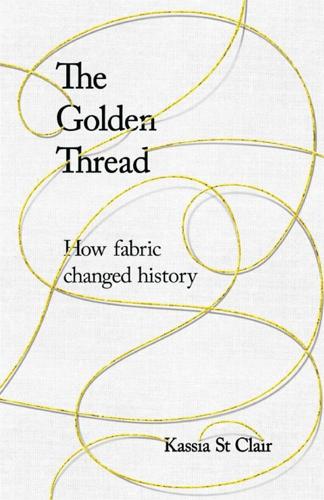
The Golden Thread: How Fabric Changed History
by
Kassia St Clair
Published 3 Oct 2018
In 1801 Joseph Marie Jacquard invented a loom that made it possible to mass-produce textiles with complex woven patterns, something that previously had taken a great deal of skill, time and expertise to produce. His ‘Jacquard Loom’ was controlled, or programmed, by pieces of card marked with a series of holes that determined the pattern. Much later, these ingenious, hole-punched cards paved the way for another invention: computing. An American engineer repurposed the punched-card system to help record census data. His firm eventually became part of International Business Machines, latterly known as IBM.9 The Jacquard Loom is one of the more obvious links between technology and textiles, but examples can be found much further back.
…
Fulling A method of strengthening woollen fabric by trampling it when wet so that the fibres of the woven cloth begin to felt, or mat together. Fustian Coarse cloth made of cotton or flax. Now more commonly a thick, twilled cotton cloth usually dyed a dull, dark colour. H Heckling To split and straighten the fibres of hemp or flax for spinning. Holland Linen fabric from the province of Holland in the Netherlands. J Jacquard loom A loom fitted with a mechanism to control the weaving of figured fabrics. This mechanism was invented by Joseph Marie Jacquard from Lyons in France. Jersey Knitted goods from Jersey, especially a kind of tunic. Later used to denote fine knitted fabrics. L Loom A machine or implement on which yarn or thread is woven.

In Our Own Image: Savior or Destroyer? The History and Future of Artificial Intelligence
by
George Zarkadakis
Published 7 Mar 2016
The Analytical Engine Singularity During his studies of manufacturing in England, Babbage had noticed the significant innovations in the textile industry. In 1801, the Jacquard loom8 used punched cards in order to automate the mechanical weaving of very complex patterns. In the separation of the mechanical part of the machine from the patterns to be woven, the Jacquard loom foretold the computing dichotomy between hardware and software; i.e. between the physical medium that executes the processing and the informational ‘pattern’ that is either the set of instructions for the processing, or the object of processing, or both. Furthermore, punched cards could be stitched together to form long tapes of patterns that were input and ‘executed’ by the looms.
…
When finite differences between the parameters of a difference equation become infinitesimal, then the equations are called ‘differential’ and are fundamental to calculus. 7Difference Engine No. 2 was reconstructed under Doron Swade, the then Curator of Computing at the London Science Museum. Reconstruction took place between 1989 and 1991, in order to celebrate the two-hundredth anniversary of Babbage’s birth. In 2000, the printer, which Babbage originally designed for the difference engine, was also completed. 8The Jacquard Loom was invented by French weaver and merchant Joseph Marie Charles, nicknamed Jacquard. It was based on an earlier invention by the master of automata, Jacques Vaucanson – of mechanical duck fame. 9The next ‘Turing-complete’ machine after the Analytical Engine would be ENIAC, which was constructed in 1946. 10Ada Lovelace called her notes simply ‘Notes’. 11The Bernoulli numbers are a sequence of rational numbers with many applications in engineering, and of great interest to mathematicians.
…
A. 61–2, 68 Hofstadter, Douglas 186–8 Hohlenstein Stadel lion-man statuette 3–5, 19–20 holistic approach to knowledge 174–5 holistic scientific methods 41–2 Holocene period 10 Holy Scripture, authority of 113–14 homeostasis 173 Homo erectus 6–7, 8, 10 Homo habilis 6, 12 Homo heidelbergensis 7 Homo sapiens archaic species 7, 8, 10 emergence of modern humans 8 Homo neanderthalensis (Neanderthals) 4, 7–8, 9–10 Homo sapiens sapiens 9–10 human ancestors aesthetic practices 9 archaic Homo sapiens 7, 8, 10 arrival in Europe 3–5 australopithecines 5, 6, 22 changes in the Upper Palaeolithic Age 9–10, 11 common ancestor with chimpanzees 5 emergence of art in Europe 3–5 emergence of modern humans 8 exodus from Africa 3–4, 6–7, 8–9 Homo erectus 6–7, 8, 10 Homo habilis 6, 12 Homo heidelbergensis 7 Homo sapiens 7, 8, 10 Homo sapiens sapiens 9–10 in Africa 5–7 Neanderthals (Homo neanderthalensis) 4, 7–8, 9–10 Human Brain Project (HBP) xiv–xvi, 164–5, 287 see also brain (human) human culture, approaches to understanding 74–9 human replicas, disturbing feelings caused by 66–73 humanity becoming like machines (cyborgs) 79–85 future of 304–17 Hume, David 139–40 humors theory of life 31–4 humour, and theory of mind 54 Humphrey, Nicholas 11 hunter-gatherer view of the natural world 20–2 hydraulic and pneumatic automata 32–6 IBM (International Business Machines) 230, 263, 264 Ice Age Europe 4, 10, 21–2 iconoclasm 67 idealism versus materialism 92–4 identity theory 144–5 imagined world of the spirits 22–3, 25, 27 inanimate objects, projection of theory of mind 15–18 Incompleteness Theorem (Gödel) 180, 186, 206–9, 211–16 inductive logic 196, 197 information disembodiment of 146–52 significance of context 151–2 the mind as 123–5 information age 232–4 information theory 147–52 Ingold, Tim 20 intelligence, definitions of 48–9, 52 intelligent machines as objects of love 48–59 Internet brain metaphor 43 collection and manipulation of users’ data 250–3 origins of 238 potential for sentience 214–15 Internet of things 251–3 intuition 200, 211 Iron Man (film) 82 Ishiguro, Hiroshi 72 Islam 102 Jacquard loom 225 James, William 162 Johnson, Samuel 140 Kasparov, Garry 263 Kauffman, Stuart 295 Kempelen, Wolfgang von 37 Kline, Nathan 79 Koch, Christof 167–8 Krauss, Lawrence 244–5 Krugman, Paul 269 Kubrick, Stanley 56, 257 Kuhn, Thomas 29, 75 Kurzweil, Ray 126, 270–1 Lang, Fritz 50 language and genesis of the modern mind 13–15 and human relationship with objects 15–18 evolution of 13–15 naming of objects 16–17 LeCun, Yann 255 Leibniz, Gottfried Wilhelm 116–17, 218–20 Lettvin, Jerry 293 liberty, end of 313–17 life algorithms of 292–6 origins of 181–3 Life in the Bush of Ghosts (Tutuola) 19 linguistics, descriptions of reality 75 lion-man statuette of Stadel cave 3–5, 19–20 Llull, Ramon (Doctor Illuminatus) 218 Locke, John 139 locked-in syndrome 307 logic x–xi, 195–202 logical substitution method 180, 183, 186 Lokapannatti (early Buddhist story) 34 London forces 107 love conscious artefacts as objects of 48–59 human need for 55–6 human relationships with androids 53–9 Lovelace, Ada 62, 226–7, 228 Luddites 268 Machine Intelligence Research Institute 58–9 machine metaphor for life 36–8 Magdalenian period 21 magnetoencephalography (MEG) 159–60, 161 Maillardet, Henri 218 Marconi, Guglielmo 239 Maria (robot in Metropolis) 50, 51 Marlowe, Christopher 63 Mars colonisation 291 Marx, Groucho 205 materialism versus idealism 92–4 mathematical dematerialisation view 92 mathematical foundations of the universe 103–6 mathematical reflexivity 186–7 mathematics 31 formal logical systems 200–11 views on the nature of 136 Maturana, Humberto 294 McCarthy, John 256, 307 McCorduck, Pamela 45, 67 McCulloch, Warren S. 36, 175, 176–8, 256, 293 Mead, Margaret 175 mechanical metaphor for life 36–8 mechanical Turk 37 medicine, development of 31–2 meditation 157 memristors 286–7 Menabrea, Luigi 226, 227 Mesmer, Franz Anton 40 mesmerism 40 Mesopotamian civilisations 30 metacognition 184 metamathematics 202, 205, 207 metaphors confusing with the actual 44–5 for life and the mind 28–47 in general-purpose language 75 misunderstanding caused by 308–13 Metropolis (1927 film) 50, 51 Middle Palaeolithic 6 Miller, George 154, 155 Milton, John 1 mind altered states 110, 111 as pure information 123–5 aspects of 85–7 debate over the nature of 91–4 disembodiment of 42 empirical approach 143–6 quantum hypothesis 106–9 scientific theory of 152–3 search for a definition 189–91 self-awareness 86–7 separate from the body 110–15 view of Aristotole 137–8 mind-body problem 32, 114–19, 129–31 Minsky, Marvin 178, 256 modern mind big bang of 10, 12–15 birth of 10–15 impacts of the evolution of language 13–15 monads 117, 119 monism versus dualism 92–3 Moore’s Law 244–5, 263, 270–1, 287 moral decision-making 277–8 Moravec paradox 275–6 Morris, Ian 222 Morse, Samuel 42 mud metaphor for life 29–31, 45 My Life in the Bush of Ghosts (music album) 19 Nabokov, Vladimir 167 Nagel, Thomas 120, 121 Nariokotome boy 7 narratives 18–27, 75 see also metaphor Neanderthals (Homo neanderthalensis) 4, 7–8, 9–10 Negroponte, Nicholas 243–4 neopositivism 141 neural machines 282–7 neural networks theory 36 neural synapses, functioning of 117–19 neuristors 286–7 neurodegenerative diseases xiii–xiv, 163–4 Neuromancer (Gibson) 36 neuromorphic computer archtectures 286–7 neurons, McCulloch and Pitts model 177–8 neuroscience 158, 306–8 Newton, Isaac 38, 103 Nike’s Fuel Band 81 noetic machines (Darwins) 284 nootropic drugs 81 Nouvelle AI concept 288 Offray de La Mettrie, Julien 37 Ogawa, Seiji 158–9 Omo industrial complex 6 On the Origin of Species (Darwin) 289–90 ‘ontogeny recapitulates phylogeny’ concept 10 Otlet, Paul 239–40 out-of-body experiences 110–11 Ovid 49, 64 Paley, William 289 panpsychism 92, 117, 252 paradigm shifts 75 in the concept of life 29–47 Pascal, Blaise 219–20 Penrose, Roger 106–9, 117, 211–12, 214 Pert, Candace B. 170 physics, gaps in the Standard Model 105 Piketty, Thomas 267, 269 pineal gland 115–16 Pinker, Steven 13, 275 Pinocchio story 56 Pitts, Walter 36, 177–8, 256, 293 Plato 134, 143, 152, 176, 189, 305 central role of mathematics 103–6 idea of reality 78, 83 influence of 95–106 notion of philosopher-kings 98–9 separation of body and mind 112 The Republic 97–101, 309, 310 theory of forms 99–101, 104, 106 Platonism 101–2, 135–7, 139, 142, 146, 147, 182, 189, 190, 242–3, 296 Pleistocene epoch 7 Poe, Edgar Allan 79 Polidori, John William 60, 62 Popov, Alexander 239 Popper, Karl 98 Porter, Rodney 282 posthuman existence 147 postmodernism 208 post-structuralist philosophers 75–9 precautionary principle 64–5 predicate logic 198–200, 206 Principia Mathematica 205–6, 207 Prometheus 29–30, 63–4 psychoanalysis 50 psychons 118, 119 Pygmalion narrative 49–52 qualia of consciousness 120–3, 157 Quantified Self movement 81–2 quantum hypothesis for consciousness 106–9 quantum tunnelling 118–19 Ramachandran, Vilayanur 70 rationalism 116 Reagan, President Ronald 237 reality, impact of acquisition of language 15–18 reductionism 41–2, 104–5, 121, 184 reflexivity 183–4, 186–9 religions condemnation of human replicas 67 seeds of 22–3, 25–6 Renaissance 34, 103, 139, 218 RepRap machines 290 res cogitans (mental substance) 38, 113–14 res extensa (corporeal substance) 38, 113–14 resurrection beliefs 126–7 RoboCop 80 robot swarm experiments 287–8 robots human attitudes towards 50–1 rebellion against humans 53, 57–9 self-replication 289–92 see also androids Rochester, Nathaniel 256 Romans 31 Rubenstein, Michael 287–8, 291 Russell, Bertrand viii, 92, 198, 204, 205–6, 207, 208, 215 Russell, Stuart 270 Sagan, Carl 133 Saygin, Ayse Pinar 69 science as a cultural product 75–9 influence of Aristotle 134–8 influence of Descartes 113–19 influence of Plato see Plato scientific method 102–5, 121 scientific paradigms 75 scientific reasoning, as unnatural to us 133–4, 137 scientific theory, definition 166, 196 Scott, Ridley 53 Searle, John, Chinese Room experiment 52, 71 Second Commandment (Bible) 67 second machine age, impact of AI 266–9 Second World War 234–6 self-awareness 16, 86–7, 157, 215–16, 273–5 self-driving vehicles 263–4 self-organisation in cybernetic systems 273–4 in living things 292 self-referencing 186–9, 215–16 see also reflexivity self-referencing paradoxes 204–6 self-replicating machines/systems 179–82, 289–92 sensorimotor skills, deficiency in AI 275–6 servers, dependence on 245–9 Shannon, Claude 147–52, 154, 176, 230–1, 256 Shaw, George Bernard Shaw 49–50 Shelley, Mary, Frankenstein 40, 60–5, 165 Shelley, Percy Bysshe 60, 62, 63–4 Shickard, Wilhem 219 Silvester II, Pope 35 Simmons, Dan 160 simulated universe concept 127–9 smart drugs 81 Snow, C.
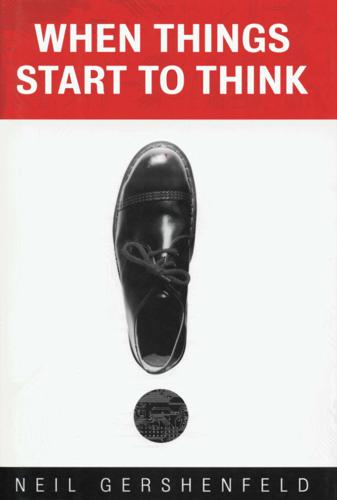
When Things Start to Think
by
Neil A. Gershenfeld
Published 15 Feb 1999
Hist. Nat. Genev., Acad. Reg. Monac., Hafn., Massi!., et Divion., Socius. Acad. Imp. et Reg. Petrop., Neap., Brux., Patav., Georg. Floren., Lyncei. Rom., Mut., Philomath. Paris, Soc. Corr., etc." No hidden compartments for him. Babbage set out to make the first digital computer, inspired by the Jacquard looms of his day. The patterns woven into fabrics by these giant machines were programmed by holes punched in cards that were fed to them. Babbage realized that the instructions could just as well represent the sequence of instructions needed to perform a mathematical calculation. His first machine was the Difference Engine, intended to evaluate quantities such as the trigonometric functions used by mariners to interpret their sextant readings.
…
Babbage and his accomplice, Lady Ada Lovelace, realized that an engine could just as well manipulate the symbols of a mathematical formula. Its mechanism could embody the rules for, say, calculus and punch out the result of a derivation. As Lady Lovelace put it, "the Analytical Engine weaves algebraical patterns just as the Jacquard Loom weaves flowers and leaves." Although Babbage's designs were correct, following them went well beyond the technological means of his day. But they had an enormous impact by demonstrating that a mechanical system could perform what appear to be intelligent operations. Darwin was most impressed by the complex behavior that Babbage's engines could display, helping steer him to the recognition that biological organization might have a mechanistic explanation.
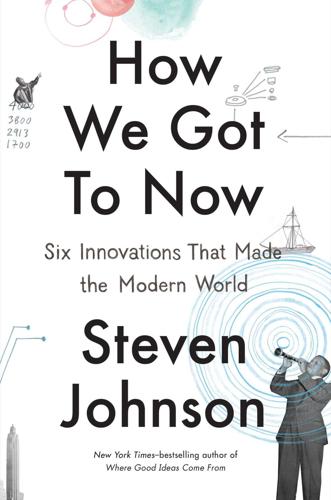
How We Got to Now: Six Innovations That Made the Modern World
by
Steven Johnson
Published 28 Sep 2014
Events that loom large in human accounts—the European conquest of the Americas, the fall of the Roman Empire, the Magna Carta—would be footnotes from the robot’s perspective. Other events that seem marginal to traditional history—the toy automatons that pretended to play chess in the eighteenth century, the Jacquard loom that inspired the punch cards of early computing—would be watershed moments to the robot historian, turning points that trace a direct line to the present. “While a human historian might try to understand the way people assembled clockworks, motors and other physical contraptions,” De Landa explained, “a robot historian would likely place a stronger emphasis on the way these machines affected human evolution.
…
B., 103 Claude, Georges, 226–28, 230, 231 Clean rooms, 159, 159–61 Clocks, 166–68 atomic, 186–88 digital, 42 pendulum, 6, 170, 171, 176, 184, 185 Clorox bleach, 151, 153 Coevolution, 4, 22 Columbia Railroad, 180, 182 Columbia University, 66, 186 Columbus, Christopher, 168 Comets, 43 Computers, 29–30, 38–39, 42, 100, 158, 161, 236, 254 Bell Labs and, 102, 108 graphic interfaces of, 65 for inventory management, 234 nineteenth-century precursor of, 245–46, 248, 249, 250, 252 time measurement and, 185, 192 waveforms converted to sound by, 96 See also Microchips; Microprocessors Congress, U.S., 6 Constantinople, fall of, 10, 14, 17 Contested Waters (Wiltse), 149 Copernican universe, 186 Corning Glassworks, 30 Cotton Club (Harlem), 110, 118 Craigslist, 7 Cretaceous age, 3 Crystals, 190 ice, 19, 70 quartz, 19, 184–86 silicon dioxide, 13 (see also Glass) Cuba, 210–11 Curie, Jacques, 184 Curie, Marie, 190 Curie, Pierre, 184, 190 Cutler, David, 148 Daguerreotypes, 217 Dark Ages, 198 Darwin, Charles, 4, 253 Darwinism, 3 Davy, Humphry, 206 Decibels, 114–15 De Forest, Lee, 106–8, 109, 110, 113, 116, 117 De Landa, Manuel, 1–2 Democratic Party, 81–83 De Moleyns, Frederick, 20 Dennison, Aaron, 176, 177, 178, 180, 181 Descartes, René, 41 Dialectical materialism, 40 Dickens, Charles, 138, 175, 220 Disease, 62, 129, 134, 154, 211 bathing seen as cause of, 137 Civil War deaths from, 143 germ theory of, 136, 140, 142, 152, 156, 158 waterborne, 148 (see also Cholera) Draggoo, Vaughn, 237 Dreiser, Theodor, 60 Dubai, 83 Dürer, Albrecht, 31, 35 DVDs, 7 Dynamics, 166, 184 Dysentery, 129, 143 Eastern time zone, 183 Edgartown (Massachusetts), 202 Edison, Thomas Alva, 9, 100, 149, 207 development of lightbulb by, 206, 208–12, 213, 215, 218, 250 phonograph invented by, 92, 97, 252 Edison Electric Light Company, 212 Egypt, ancient, 14, 164, 199, 216–17 Einstein, Albert, 189 Ekirch, Roger, 200 Elizabeth I, Queen of England, 138 Elevators, 99, 100 Epidemics, 129, 140, 143, 154 Ellington, Duke, 110, 111, 112, 118 England, 48, 138, 170, 217 Greenwich Mean Time in, 182 industrial revolution in, 172–74 Longitude Prize in, 168 in World War I, 120 See also London Enlightenment, 90 Eno, Brian, 192 Erie Canal, 60 Essex (ship), 202 Etruscans, ancient, 165 Evolution, 2–5, 22, 40, 42 Eyeglasses, see Spectacles Factories, 61, 151, 158, 174 artificial light in, 200, 224 for neon lights, 230 time measurement and, 185 See also Mills Fahrenheit scale, 65 Favelas, 129, 154 Favorite (ship), 49, 54 Feaster, Patrick, 96 Federal-Aid Highway Act (1956), 6 Fessenden, Reginald, 119–20, 121, 122 Feynman, Richard, 9–10 Fiberglass, 29, 31 Fiber-optic cables, 30, 143 Fielding, Henry, 241 Fisheries Association, 72 Fitzgerald, Ella, 112 Five Points (Manhattan), 220, 223, 225 Flash Gordon (comic strip, movies and television series), 232, 234 Flatiron Building (New York), 100 Fletcher, Henry, 114 Florence Baptistry, 32 Florida, 80, 83 Ford, Henry, 74, 149 Ford Motor Company, Rouge Plant, 175 Fossil fuels, 42, 54, 203–4 France, 67, 87–88, 90, 118, 137, 217, 228 See also Paris Franchise businesses, 228, 230 Franklin, Benjamin, 201–2 Frigidaire, 76 Frozen food, 72, 73, 74–76, 75, 84 naturally occurring, in Labrador, 68, 70, 71, 253 Fuller, George Warren, 144 Gaedicke, Johannes, 218, 225 Galileo Galilei, 10, 25, 38 pendulum clock invented by, 164–66, 168, 169, 170, 171, 184, 190, 194 García Márquez, Gabriel, 50 Gardiner, Robert, 48 Gaslight, 106, 203, 217 Gates, Bill and Melinda, Foundation, 156, 157 General Conference on Weights and Measures (Paris, 1967), 163–64, 187 General Electric, 69 General Foods, 74 General Seafood, 74 Geochemistry, 43 Georgia, 67 Germany, 104, 120, 218 Germ theory, 136, 140, 142, 152, 156, 158 Gertner, Jon, 100, 232 Giovannoni, David, 96 Glasses, see Spectacles Glassmaking, 14, 17–19, 42, 184 See also Lenses; Mirrors; Silicon dioxide Global trade, 46, 60, 170, 172 Google, 7, 174, 250 Gorrie, John, 62, 63, 65–66 Gould, Gordon, 232 GPS (Global Positioning System), 189 Great Pyramid of Giza, 216–17 Greenwich Mean Time (GMT), 182, 183 Gutenberg, Johannes, 4, 6, 20, 22, 25, 32 Half-life, 190 Hamburg, 127 Hard Times (Dickens), 175 Harper’s Weekly, 220 Harvard University, 148, 198 Havana, 46, 48, 53 Hawaii, 37–40, 39 Heisenberg, Werner, 186 Hendrix, Jimi, 115 Hennessey, Meagan, 96 Hillis, Danny, 192 Hitler, Adolf, 114 Holiday, Billie, 112 Hollywood, 150 Homo sapiens, 191 evolution of, 40 Hooke, Robert, 22–23, illustration by, 24 microscope designed by, 26 Hoover Dam, 228 Houston, 80 How Congress Evolves (Polsby), 81 How the Other Half Lives (Riis), 223 Hughes Aircraft, 232 Hurricanes, 62 Hussey, Captain, 201 Hutchinson, Benjamin, 58 Hygiene, 137, 161 See also Bathing; Public health Ice Age, 60 “Ice House Diary” (Tudor), 48–49 Ice trade, 45–46, 48–57, 61–62, 84–85, 167, 253 climate and disruptions of, 57, 62, 65 failure of early attempts at, 49–52 Idea Factory, The (Gertner), 100 Immigrants, 58, 224 to warmer climates, air-conditioning and, 80, 83 India, 53, 55 Indiana, 180 Industrial revolution, 6, 42, 61, 170, 172–75 Infant mortality, 148, 152 Innovation, “genius” theory of, 205 Instagram, 31 Internet, 30, 112, 134 Inuits, 68, 70, 74, 253 iPod, 205, 210 Irvin Theatre, 81 Italy, 20, 37 iTunes, 250 Jack the Ripper, 134 Jacquard loom, 2 Jakarta, 83 Janssen, Hans, 22 Janssen, Zacharias, 22, 24 Japan, 36, 211 Jazz, 8, 110, 112–13 Jersey City, water supply of, 143–46, 150, 156, 158 Jobs, Steve, 209, 254 Jungle, The (Sinclair), 134–35 Jupiter, moons of, 25 Justice Department, U.S., 102 Karachi, 83 Kauffman, Stuart, 64 Keck Observatory, 38–40, 39, 89 Kelly, Kevin, 192–93 Kentucky Fried Chicken, 228 Kerosene lamps, 200, 203, 205 Khufu, 216 King, Martin Luther, Jr., 112–13 “I Have a Dream” speech, 114, 231 Koch, Robert, 141–42 Kramers, Jan, 43 Kruesi, John, 211 Labrador, 68, 70, 71, 72, 253 Lagos, 83 Lancet, The, 140 Lasers, 30, 38–39, 100, 158, 232–37 Las Vegas, 226, 227, 228–31 Latitude, 168 Lawrence Livermore Labs, 235 Leal, John, 142–46, 148, 150, 151, 154, 156, 158, 160 Learning from Las Vegas (Brown and Venturi), 230, 231 LEDs, 205, 250 Led Zeppelin, 115 Lenses, 2, 6, 8, 10, 30, 31, 41, 156, 251 camera, 25, 27, 42 lasers and, 235 microscope, 22–24, 34, 141–42 of spectacles, 2, 4, 20, 22, 27 telescope, 24–25, 34, 38 Leonardo da Vinci, 31, 34, 252 Libyan Desert, 13–14, 43 “Lightbulb moments,” 72, 198 Lightbulbs, 2, 8, 41, 103, 198, 200–201, 205–15, 218, 228 fluorescent, 200, 205 lasers and, 232–33 LED, 205, 250 neon, see Neon lights Lighthouses, 118 Limelight, 217, 225 Lippershey, Hans, 25, 38 Listerine, 151, 152 Live Aid, 114 Liverpool, 110 London, 83, 104, 127, 134, 138, 152, 154, 181, 241, 246 cholera in, 140, 141, 147 Clockmakers’ Museum in, 173 underground in, 133, 135 Longitude, 168, 172 Long Now Foundation, 192–93 Clock of, 192, 193 Los Angeles, South Central, 110 Louis XIII, King of France, 138 Louisiana, 67 Lovelace, Augusta Ada Byron, Countess of, 241–42, 243, 244–46, 248, 250–52, 255 Lovelace, William King, Earl of 241–42 MacFarlane, Alan, 34, 36 Macintosh computers, 254 Madagascar (ship), 45 Madras, 55 Magna Carta, 2 Malaria, 62 Manila, 83 Marconi, Guglielmo, 106 Mariana, Queen of Spain, 32 Marrison, W.

Code: The Hidden Language of Computer Hardware and Software
by
Charles Petzold
Published 28 Sep 1999
Successful mechanical calculators that real people could use weren't available until the late nineteenth century. One curious invention that was to have a later influence on the history of computing—as well as a profound influence on the textile industry—was an automated loom developed by Joseph Marie Jacquard (1752–1834). The Jacquard loom (circa 1801) used metal cards with holes punched in them (much like those of a player piano) to control the weaving of patterns in fabrics. Jacquard's own tour de force was a self-portrait in black and white silk that required about 10,000 cards. In the eighteenth century (and indeed up to the 1940s), a computer was a person who calculated numbers for hire.
…
What's most intriguing about the Analytical Engine is that it could be programmed using cards that were adapted from the cards used in the Jacquard pattern-weaving loom. As Augusta Ada Byron, Countess of Lovelace (1815–1852), put it (in notes to her translation of an article written by an Italian mathematician about Babbage's Analytical Engine), "We may say that the Analytical Engine weaves algebraical patterns just as the Jacquard-loom weaves flowers and leaves." Babbage seems to be the first person to understand the importance of a conditional jump in computers. Here's Ada Byron again: "A cycle of operations, then, must be understood to signify any set of operations which is repeated more than once. It is equally a cycle, whether it be repeated twice only, or an indefinite number of times; for it is the fact of a repetition occurring at all that constitutes it such.
…
Fearing that the 1890 census would take longer than a decade to process, the Census Office explored the possibility of automating the system and chose machinery developed by Herman Hollerith (1860–1929), who had worked as a statistician for the 1880 census. Hollerith's plan involved manila punch cards 6 ⅝ x 3 ¼ inches in size. (It's unlikely that Hollerith knew about Charles Babbage's use of cards to program his Analytical Engine, but he was almost certainly familiar with the use of cards in the Jacquard loom.) The holes in these cards were organized into 24 columns of 12 positions each, for a total of 288 positions. These positions represented certain characteristics of a person being tallied in the census. The census taker indicated these characteristics by punching ¼-inch square holes into the appropriate positions on the card.
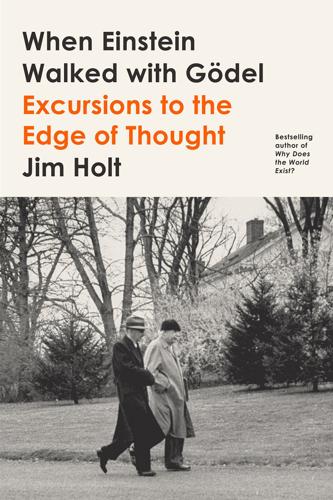
When Einstein Walked With Gödel: Excursions to the Edge of Thought
by
Jim Holt
Published 14 May 2018
Babbage provided Ada with ample assistance, not only explaining the workings of his brainchild to her, but also supplying his own diagrams and formulas. The poetical conceits were Ada’s alone. Stressing that the Analytical Engine was to be programmable by punched cards, like the automatic French looms, she wrote that it “weaves algebraical patterns just as the Jacquard-loom weaves flowers and leaves.” Ada gave several examples of the kinds of programs the machine would be able to execute. In every case but one, these examples had been worked out years earlier by Babbage, although, he later insisted, “the selection was entirely her own.” The one novel example in Ada’s notes had to do with computing what are known as the Bernoulli numbers.
…
But—perhaps because Woolley himself was a writer and broadcaster rather than a scientist—he does not dwell on Ada’s technical prowess or lack thereof. Instead, he plays up her Byronic afflatus, saluting her as a practitioner of “poetical science.” Through her lyrical similes—most famously, “the Analytical Engine weaves algebraical patterns just as the Jacquard-loom weaves flowers and leaves”—Ada “managed to rise above the technical minutiae of Babbage’s extraordinary invention to reveal its true grandeur.” If Ada Lovelace did not invent computer programming, is it at least fair to say that Charles Babbage invented the computer? Woolley’s biography of Ada makes much of the fact that Babbage never got his Analytical Engine built.
…
Wallace on; at end of universe; French rationalist views on; metaphysical; of primes; Russian mystical rationale for Infinity and the Mind (Rucker) information theory Inheritors, The (Conrad and Ford) In the Light of Logic (Feferman) instantaneous velocity Institute for Advanced Study; Einstein at; Gödel at Institut de France Institut des Hautes Études Scientifiques Institut de Mathématiques de Jussieu International Congress of Mathematicians Internet “intuitionism” IQ “Is Google Making Us Stupid?” (Carr) Islam Ismael, Jenann Israeli Air Force Jacobi, Derek Jacquard loom Jakobson, Roman James, William Jarry, Alfred Jefferson, Thomas Jesuits Jews; Nazi persecution and annihilation of; Soviet discrimination against Johns Hopkins University Johnson, Philip Johnson, Steven Journal of Experimental Psychology Journal of Personality and Social Psychology Journal of Philosophy, The Journal of Symbolic Logic, The Joyce, James Kabbalists Kaku, Michio Kant, Immanuel Kantor, Jean-Michel Keats, John Kempe, Alfred Bray Kepler, Johannes Kevles, Daniel J.
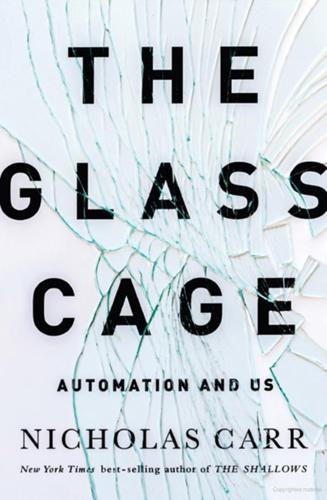
The Glass Cage: Automation and Us
by
Nicholas Carr
Published 28 Sep 2014
James Watt’s steam engine, the original prime mover of the Industrial Revolution, incorporated an ingenious feedback device—the fly-ball governor—that enabled it to regulate its own operation. As the engine sped up, it rotated a pair of metal balls, creating a centrifugal force that pulled a lever to close a steam valve, keeping the engine from running too fast. The Jacquard loom, invented in France around 1800, used steel punch cards to control the movements of spools of different-colored threads, allowing intricate patterns to be woven automatically. In 1866, a British engineer named J. Macfarlane Gray patented a steamship steering mechanism that was able to register the movement of a boat’s helm and, through a gear-operated feedback system, adjust the angle of the rudder to maintain a set course.41 But the development of fast computers, along with other sensitive electronic controls, opened a new chapter in the history of machines.
…
Macfarlane, 36–37 Great Britain, 22–23, 35, 157 Great Depression, 25–26, 27, 29, 38 grid cells, 134 Groopman, Jerome, 97–98, 105 Gross, Mark, 167 Gundotra, Vic, 203 gunnery crews, 35–36, 41 guns, 35–38, 41, 185 habit formation, 88–89 Hambrick, David, 83 hands, 143, 144, 145, 216 happiness, 14–16, 137, 203 hardware, 7–8, 52, 118 Harris, Don, 52–53, 63 Hartzband, Pamela, 97–98 Harvard Psychological Laboratory, 87 Hayles, Katherine, 12–13 Health Affairs, 99 Health and Human Services Department, U.S., 94, 95 health care, 33, 173 computers and, 93–106, 113–15, 120, 123, 153–54, 155 costs of, 96, 99 diagnosis in, 10, 12, 70–71, 105, 113–15, 120, 123, 154, 155 see also doctors; hospitals Health Information Technology Adoption Initiative, 93–94 Heidegger, Martin, 148 Hendren, Sara, 130–31 Heyns, Christof, 188–89, 192 hippocampus, 133–37 Hippocrates, 158 history, 124, 127, 159–60, 174, 227 Hoff, Timothy, 100–102 Hoover, Herbert, 26 hospitals, 94–98, 102, 123, 155, 173 How Doctors Think (Groopman), 105 How We Think (Hayles), 13 Hughes, Thomas, 172, 196 human beings: boundaries between computers and, 10–12 change and, 39, 40 killing of, 184 need for, 153–57 robots as replications of, 36 technology-first automation vs., 153–76 Human Condition, The (Arendt), 108, 227–28 humanism, 159–61, 164, 165 Human Use of Human Beings, The (Wiener), 37, 38 Huth, John Edward, 216–17 iBeacon, 136 IBM, 27, 118–20, 195 IBM Systems Journal, 194–95 identity, 205–6 IEX, 171 Illingworth, Leslie, 19, 33 imagination, 25, 121, 124, 142, 143, 215 inattentional blindness, 130 industrial planners, 37 Industrial Revolution, 21, 24, 28, 32, 36, 106, 159, 195 Infiniti, 8 information, 68–74, 76–80, 166 automation complacency and bias and, 68–72 health, 93–106, 113 information overload, 90–92 information underload, 90–91 information workers, 117–18 infrastructure, 195–99 Ingold, Tim, 132 integrated development environments (IDEs), 78 Intel, 203 intelligence, 137, 151 automation of, 118–20 human vs. artificial, 11, 118–20 interdependent networks, 155 internet, 12–13, 33n, 176, 188 internet of things, 195 Introduction to Mathematics, An, (Whitehead), 65 intuition, 105–6, 120 Inuit hunters, 125–27, 131, 217–20 invention, 161, 174, 214 iPads, 136, 153, 203 iPhones, 13, 136 Ironstone Group, 116 “Is Drawing Dead?” (symposium), 144 Jacquard loom, 36 Jainism, 185 Jefferson, Thomas, 160, 222 Jeopardy! (quiz show), 118–19, 121 Jobless Future, The (Aronowitz and DiFazio), 27–28 jobs, 14–17, 27–33, 85, 193 automation’s altering of, 67, 112–20 blue-collar, 28, 109 creating, 31, 32, 33 growth of, 28, 30, 32 loss of, 20, 21, 25, 27, 28, 30, 31, 40, 59, 115–18, 227 middle class, 27, 31, 32, 33n white-collar, 28, 30, 32, 40, 109 Jobs, Steve, 194 Jones, Michael, 132, 136–37, 151 Kasparov, Garry, 12 Katsuyama, Brad, 171 Kay, Rory, 58 Kelly, Kevin, 153, 225, 226 Kennedy, John, 27, 33 Kessler, Andy, 153 Keynes, John Maynard, 26–27, 66, 224, 227 Khosla, Vinod, 153–54 killing, robots and, 184, 185, 187–93 “Kitty Hawk” (Frost), 215 Klein, Gary, 123 Knight Capital Group, 156 know-how, 74, 76, 115, 122–23 knowledge, 74, 76, 77, 79, 80–81, 84, 85, 111, 121, 123, 131, 148, 153, 206, 214, 215 design, 144 explicit (declarative), 9, 10–11, 83 geographic, 128 medicine and, 100, 113, 123 tacit (procedural), 9–11, 83, 105, 113, 144 knowledge workers, 17, 148 Kool, Richard, 228–29 Korzybski, Alfred, 220 Kroft, Steve, 29 Krueger, Alan, 30–31 Krugman, Paul, 32–33 Kurzweil, Ray, 181, 200 labor, 227 abridging of, 23–25, 28–31, 37, 96 costs of, 18, 20, 31, 175 deskilling of, 106–12 division of, 106–7, 165 intellectualization of, 118 in “Mowing,” 211–14 strife, 37, 175 see also jobs; work Labor and Monopoly Capital (Braverman), 109–10 Labor Department, U.S., 66 labor unions, 25, 37, 59 Langewiesche, William, 50–51, 170 language, 82, 121, 150 Latour, Bruno, 204, 208 lawn mowers, robotic, 185 lawyers, law, 12, 116–17, 120, 123, 166 learning, 72–73, 77, 82, 84, 88–90, 175 animal studies and, 88–89 medical, 100–102 Lee, John, 163–64, 166, 169 LeFevre, Judith, 14, 15, 18 leisure, 16, 25, 27, 227 work vs., 14–16, 18 lethal autonomous robots (LARs), 188–93 Levasseur, Émile, 24–25 Leveson, Nancy, 155–56 Levesque, Hector, 121 Levinson, Stephen, 101 Levy, Frank, 9, 10 Lewandowsky, Stephan, 74 Lex Machina, 116–17 Licklider, J.
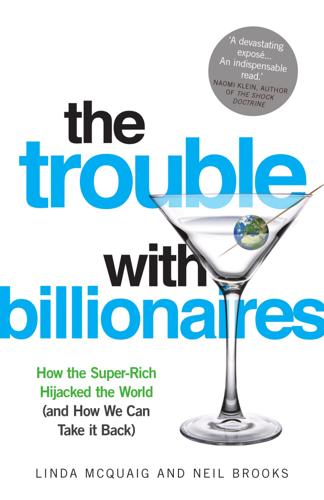
The Trouble With Billionaires
by
Linda McQuaig
Published 1 May 2013
If a rod encountered a hole in a card, it would activate a thread; if it encountered solid card, it would do nothing. So the actions of the loom were determined by the placement of a series of holes in the punched cards. With the insertion of the cards, the loom could effectively be programmed to carry out the complex weaving tasks on its own. The Jacquard loom, notes technology historian James Essinger, ‘was a machine of a caliber and sophistication that had never been seen before. In fact, when it was patented in 1804, it was unquestionably the most complex mechanism in the world’.3 Its punched-card technology was the germ of the idea for the computer.
…
In the same way that Jacquard had used punched cards to control the metal rods on his loom, Babbage’s machine used punched cards to control metal rods that in turn activated cogwheels carrying out calculating functions. His ‘Analytical Engine’ even had a memory, which he called ‘the store’, and a processor, which he called the ‘mill’. Babbage openly acknowledged that his idea was derived from Jacquard, even displaying a magnificent portrait of the French weaver in his home, made of silk using the Jacquard loom. While Babbage developed highly sophisticated portions of his machine, as well as detailed plans and drawings for its completion, he failed to make it actually operational. More than a century and a half later, in 2004, scientists built a full model of his extraordinary apparatus – with eight thousand parts and weighing five tons – based faithfully on his drawings.

Rage Inside the Machine: The Prejudice of Algorithms, and How to Stop the Internet Making Bigots of Us All
by
Robert Elliott Smith
Published 26 Jun 2019
Before this innovation, making complex, patterned fabrics required fiddly manual steps on something called a drawloom, with someone called a drawboy working beside the main weaver, configuring things called warp ends and heddles. These fundamentals of yarn work are all bits of arcana now, because variations on the Jacquard loom were adopted internationally, eliminating these last few skilled weaving jobs. The elimination of essentially all high-skilled textile jobs by the eighteenth century meant massive job displacement, a devaluation of weaving skills and the degradation of working conditions for the remaining low-skilled workers who were retained to operate the machines.
…
McCulloch and Walter Pitts, 1943, A Logical Calculus of the Ideas Immanent in Nervous Activity. The Bulletin of Mathematical Biophysics, 5(4): 115–133, www.cse.chalmers.se/~coquand/AUTOMATA/mcp.pdf 15D.O. Hebb, 1949, Organization of Behavior. New York: Wiley. 16Ironically, while Babbage’s key innovation of introducing Jacquard loom cards were included in most tabulating machines from the time IBM standardized them in 1928, they only began to be widely used to program general-purpose computers just before Rosenblatt developed the Mark I Perceptron. 17Unfortunately, Turing’s boss, NPL Director Sir Charles Galton Darwin (named for his grandfather Charles Darwin and great-uncle Francis Galton), dismissed the paper as a ‘schoolboy essay’, and it was only published posthumously, in 1968, 14 years after Turing was driven to suicide by the British authorities’ persecution of his crime of homosexuality. 18M.
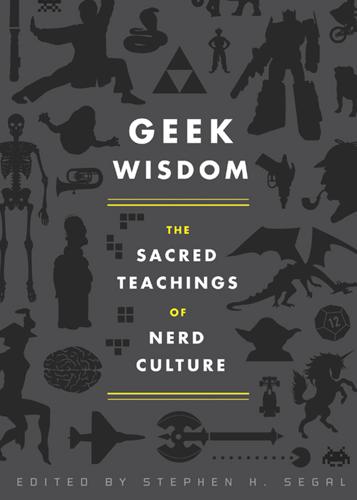
Geek Wisdom
by
Stephen H. Segal
Published 2 Aug 2011
Freud introduced the concept of the id in his 1920 essay “Beyond the Pleasure Principle.” Forbidden Planet, the greatest science-fiction film ever inspired by Shakespeare, explored the id more tangibly in 1956. “ONLY SPARTAN WOMEN GIVE BIRTH TO REAL MEN.” —QUEEN GORGO, 300 “THE ANALYTICAL ENGINE WEAVES ALGEBRAIC PATTERNS, JUST AS THE JACQUARD LOOM WEAVES FLOWERS AND LEAVES.” —ADA LOVELACE, ON CHARLES BABBAGE’S ANALYTICAL ENGINE THE REAL QUEEN GORGO of Sparta was a political mover and shaker on par with the modern age’s most respected power brokers. She was also a geek and early cryptanalyst, helping her fellow Spartans find the code hidden in a chiseled wooden board that warned of impending Persian attack.
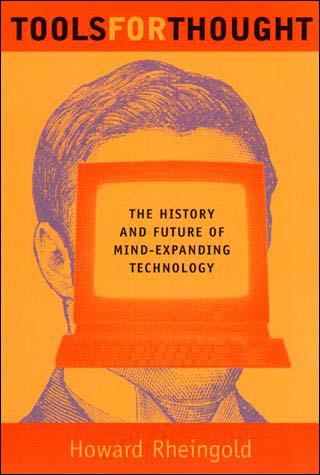
Tools for Thought: The History and Future of Mind-Expanding Technology
by
Howard Rheingold
Published 14 May 2000
Babbage's Analytical Engine," includes more than one prophetic passage, unheeded by most of her contemporaries, but which have grown in significance with the passage of a century: The distinctive characteristic of the Analytical Engine, and that which has rendered it possible to endow mechanism with such extensive faculties as bid fair to make this engine the extensive right hand of algebra, is the introduction into it of the principle which Jacquard devised for regulating, by means of punched cards, the most complicated patters in the fabrication of brocaded stuffs. It is in this that the distinction between the two engines lies. Nothing of the sort exists in the Difference Engine. We may say most aptly that the Analytical Engine weaves algebraical patterns just as the Jacquard loom weaves flowers and leaves. . . . The bounds of arithmetic were, however, outstepped the moment the idea of applying cards had occurred; and the Analytical Engine does not occupy common ground with mere "calculating machines." It holds a position wholly its own; and the considerations it suggests are most interesting in their nature.
…
One account by a man named Willcox, who worked with both Billings and Hollerith in the census office stated: While the returns of the Tenth (1881) Census were being tabulated at Washington, Billings was walking with a companion through the office in which hundreds of clerks were engaged in laboriously transferring items of information from the schedules to the record sheets by the slow and heartbreaking method of hand tallying. As they were watching the clerks he said to his companion, 'There ought to be some mechanical way of doing this job, on the principle of the Jacquard loom, whereby holes in a card can regulate the pattern to be woven.' The seed fell on good ground. His companion was a talented young engineer in the office who first convinced himself that the idea was practicable and then that Billings had no desire to claim or use it. The "talented young engineer," of course, was Hollerith, who wrote this version in 1919: One Sunday evening at Dr.
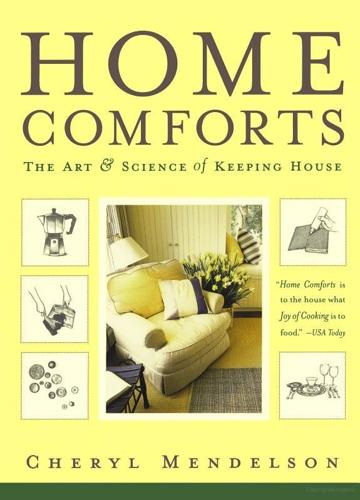
Home Comforts: The Art and Science of Keeping House
by
Cheryl Mendelson
Published 4 Nov 1999
Cotton or linen toweling in bird’s eye or honeycomb dobby weave, or with a rough, pebbly surface, and with loosely twisted filling yarns or long floats to increase absorbency. See Huck towel. Tending to attract water; absorbent (of water). Tending to repel water; unabsorbent (of water). Tweed made in Ireland, usually with white warp and colored filling yarns. Any fabric woven on a jacquard loom. The jacquard loom creates intricate designs woven into the cloth by means of punched cards that enable it to handle far more threads than other looms. Brocades, damasks, and tapestries are all types of jacquard fabrics. A smooth, plain-knit fabric of wool, cotton, rayon, or synthetic blends. Used for dresses, shirts, sportswear, underwear.
…
Lappet-woven fabrics tend to be more durable than swivel-woven fabrics because the ends of the decoration threads are more securely fastened. The dobby weave creates simple designs by means of a mechanical attachment to a plain loom. Bird’s-eye is the name of a typical fabric having dobby weave. The jacquard weave creates fabrics with highly intricate designs. Jacquard weaving is done on a jacquard loom, which uses punched cards that control the movements of the warp yarns. This intricate type of weaving is used to make fine linen damasks, upholstery fabrics, silk brocades, and tapestries. Many weaves that were associated entirely with one sort of fiber a hundred years ago are now often available in virtually any sort of fiber one might wish.
…
Cotton from the Madras region in India, either in natural color or vegetable dyed, often in colored plaids, stripes, or checks. Its tendency to fade and bleed as a result of the dyes used is periodically the object of faddish admiration. Leno-weave open-mesh fabric, very light in weight, of cotton, silk, or synthetics. Used for curtains, dressy evening fashion. See illustration on page 199. Double-cloth woven on a jacquard loom to create a quilted or stitched surface. Used for bedspreads and draperies. Originally made of padded silk. A dull, smooth, heavy, very short napped, quite durable wool fabric used for coatings and outerwear. Looks somewhat like felt. Also comes in fibers other than wool. Fibers from the hair of the angora goat, or a soft, woolen fabric made from mohair, in plain or twill weaves.

The One Device: The Secret History of the iPhone
by
Brian Merchant
Published 19 Jun 2017
A former church abbey tucked in the middle of Paris’s third arrondissement, it’s at once sprawling and unassuming. A mold of the Statue of Liberty greets visitors in the stone courtyard. You’ll find some of the most important precursors to the modern computer here, from Pascal’s calculator (the first automatic calculator) to the Jacquard loom (which inspired Charles Babbage to automate his Analytical Engine). And you’ll find the pendulum. Jean-Bernard-Léon Foucault—not to be confused with the more strictly philosophical Foucault, Michel—had set out to prove that the Earth rotated on its axis. In 1851, he suspended a bob and a wire from the ceiling of the Paris Observatory to show that the free-swinging pendulum would slowly change direction over the course of the day, thus demonstrating what we now call the Coriolis effect.
…
Some additional quotes are drawn from a previous interview with Oshima archived at the Japan Patent Office. A 60 Minutes story about Apple’s camera factory provided the figures and data about the company’s current camera operations. 7. Sensing Motion A visit to the Musée des Arts et Métiers kicked off this chapter; in addition to housing the famed pendulum, it’s also home to the Jacquard loom, Pascal’s calculator, and other early computer ancestors. Sid Harza helped explain MEMS tech to the humble layman—myself—while Brian Huppi explained how Apple developed the sensors here, and Brett Bilbrey shed more light on sensor development in general. The articles by Economist writer Glenn Fleishman on GPS were a useful reference.

Smart Cities: Big Data, Civic Hackers, and the Quest for a New Utopia
by
Anthony M. Townsend
Published 29 Sep 2013
Billings’ tea table, he said to me there ought to be a machine for doing the purely mechanical work of tabulating population and similar statistics. We talked the matter over. . . . He thought of using cards with the description of the individual shown by notches punched in the edge of the card.”13 Punch cards had been used to control machinery since the 1801 invention of the Jacquard loom, a French machine that used thousands of cards to weave extremely complicated patterns in textiles. Their application to data processing held tantalizing potential. When General Walker left the Census Bureau in 1881 to take over as the president of MIT, he invited Hollerith to join him as an instructor in mechanical engineering.
…
, 205 Hiltzik, Michael, 111 Hirshberg, Peter, 226–30, 315 Hoffman, Abbie, 227 Hollerith, Herman, 59–62, 64, 294 Hong Kong, 141 Hopper, Grace, 255 Hotspot 2.0, 55 House of Representatives, U.S., 57 Howard, Ebenezer, 94–98 Huawei, 49 Hudson Institute, 277 HunchWorks, 184 hyperlocal news site, 155 IBM, 7, 8, 9, 15, 38, 57, 62–69, 72, 82–91, 107, 223–25, 291, 294, 308, 316–17 Deep Thunder of, 66, 68, 82 Global Public Sector of, 65 “Intelligent Operations Center for Smarter Cities” of, 65 pre-history of, 57–62 as promoter of smart cities, 31–32 Smarter Cities Challenge of, 65, 83 Smarter Planet Campaign, 63–64 “System Dynamics for Smarter Cities” of, 82 ICT4D (Information and Communication Technologies for Development), 172–77, 180, 188, 190, 304 IDC, 55 IEEE Spectrum, 49 Igoe, Tom, 136–41 IMF, 26 Incheon International Airport, 24 India: mobile phones in, 178–79 urban development plans for, 30 urban housing needs of, 2 Indianapolis, Ind., 205–6 indoor positioning systems, 272 Industrial Dynamics (Forrester), 77 industrialization, of cities in nineteenth century, 5 information technology, 192–93, 241, 280 history of urban relationship to, 4–14 as undermining need for cities, 6 In-Stat, 39 “instrumentation,” sensor grids in, 32 Intel, 131–32, 153 alliance with Microsoft of, 290 Intellec-8, 153 International Brotherhood of Electrical Workers, on aging infrastructure, 38 International Energy Agency, 278 Internet: broadband vs. cable for, 2–3 “bufferbloat” problem in, 266 cafes for, 26 Cisco as leading supplier for, 44 cloud infrastructure for, 289, 294 dot-com bubble of, 121 DSL for, 2, 195 fiber-optic lines for, 2, 46, 171, 262, 287–89 hubs for, 260–61 human right as access to, 288 invention of, 107–11 “kill switch” of, 300 local area networks (LANs) for, 45 net neutrality for, 288 rapid expansion of, 6 social media for, 304 untethering from wire of, 49–56 of Victorian age, 44 voice calls in protocol of, 37 Internet of Things (big data), 3–4, 134–36, 139–41 Invisible Cities (Calvino), 305 iPhone, 6, 271 apps for, 200–201, 292 rapid spread of, 148 Iran, 266–67 Istanbul, 308 Italy, 61 Ito, Joi, 109 iTrans, 232 iTunes App Store, 148–49, 234 Ivrea, 137 Interaction Design Institute Ivrea (IDII) at, 137 Jabber, 293 Jacob, Nigel, 213–17, 224, 239, 242 Jacobs, Jane, 16, 97–98, 102–6, 234–35 Jacquard loom, 59 Jaguar, E-Type, 21 Jana, 183 Japan, 26, 262–63 Jevons paradox, 317 Jordan, Vincent, 197–98 Joroff, Michael, 25, 219–20, 305–6, 308 Journal of the American Institute of Planners, 78, 81 Jungle, The (Sinclair), 318 Jupiter Communications, 121 Kaczynski, Ted, 70 Kahn, Herman, 277 Kansas City, Mo., 36 Kaplan, Daniel, 225 Kargon, Robert, 96 Karnataka, India, corruption in, 12–13 Kasarda, John, 24 Katz, James, 56 Kaufman, Sarah, 159 Kenya, 179–80, 184–89 M-Pesa smart banking in, 179 Safaricom wireless carrier in, 179 Khanna, Parag, 224 Kirkpatrick, Robert, 181–84 Koolhaas, Rem, 112 Koonin, Steve, 314 Krugman, Paul, 74 Kundra, Vivek, 200, 204 Landau, Royston, 22 Langner, Ralph, 267 Lara, Marcos, 131 Lee, Douglass, 81–82, 88, 296–98 Lehrer, Jonah, 312 Leibowitz, Jon, 197, 287 Lerner, Sandy, 44 Levitas, Jake, 230 Levittown, N.Y., 231 LG, 23, 49 Light, Jennifer, 78–79 Lindsay, Greg, 24, 25, 28 Lindsay, John, 80, 207, 212 Linux, 241 Lippmann, Walter, on 1939 World’s Fair, 18 Living Cities, 206 Living Labs Global, 10, 244–45 Awards from, 245–46 Living PlanIT, 249, 289–90 load shedding, 39–41 load shifting, 39–41 Locke, Gary, 4 London, 94–95 congestion-pricing system in, 279–80 Crystal Palace in, 19–21, 23 first public electric streetlamps in, 35 growth of, 6 industrialization of, 5 Oyster card in, 316 Longmont, Colo., 197–98 Look Before We Leap, 197–98 “look smart,” 68 Löscher, Peter, 8, 38 Lynch, Kevin, 160 Macfarlane, W.
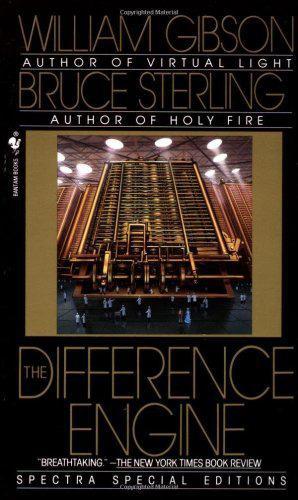
The Difference Engine
by
William Gibson
and
Bruce Sterling
Published 31 Aug 1990
The Difference Engine William Gibson & Bruce Sterling Copyright 1991 FIRST ITERATION The Angel of Goliad Composite image, optically encoded by escort-craft of the trans-Channel airship Lord Brunel: aerial view of suburban Cherbourg, October 14, 1905. A villa, a garden, a balcony. Erase the balcony's wrought-iron curves, exposing a bath-chair and its occupant. Reflected sunset glints from the nickel-plate of the chair's wheel-spokes. The occupant, owner of the villa, rests her arthritic hands upon fabric woven by a Jacquard loom. These hands consist of tendons, tissue, jointed bone. Through quiet processes of time and information, threads within the human cells have woven themselves into a woman. Her name is Sybil Gerard. Below her, in a neglected formal garden, leafless vines lace wooden trellises on whitewashed, flaking walls.
…
Mallory turned, right-face, left-face, before the wardrobe mirror. Unbuttoning the coat, he thrust his hands into the trouser-pockets, the better to display the waistcoat, which was woven in a dizzy mosaic of tiny blue-and-white squares. Ada Checkers, the tailors called them, the Lady having created the pattern by programming a Jacquard loom to weave pure algebra. The waistcoat carried off the whole business, he thought, though still it needed something, perhaps a cane. Flicking the hinge of his cigar-case, he offered a prime Havana to the gent in the mirror. A fine gesture but one couldn't carry a silver cigar-case about like a lady's muff; that was a faggot-above-a-load, surely.
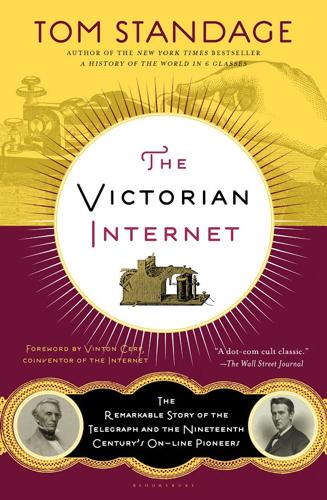
Victorian Internet
by
Tom Standage
Published 1 Jan 1998
Admittedly, messages had to be punched onto a tape by hand before sending, but this was less skilled work than operating a Morse key, and it could be done in advance; long messages could be punched by several operators in parallel, each punching a different paragraph, and then spliced together. The Wheatstone Automatic telegraph was widely com pared with the Jacquard loom, which wove cloth into a pattern determined by holes punched in cards—indeed, it was sometimes referred to as the "electric Jacquard." Following its invention, Wheatstone further refined his design, and it entered widespread use after 1867, particularly for news transmission, for which it was particularly well suited; news needed to be sent quickly because its value rapidly diminished.
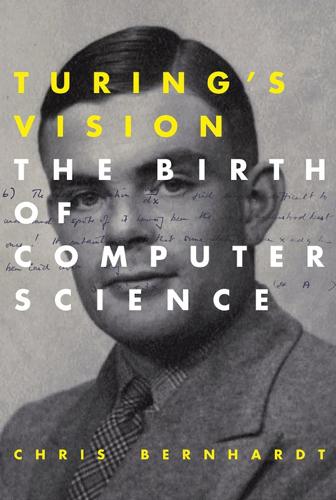
Turing's Vision: The Birth of Computer Science
by
Chris Bernhardt
Published 12 May 2016
Although Turing’s definition has an elegant simplicity, the other definitions, though equivalent, give us different vantage points from which to view computation. As we commented before, things that are difficult to see from one viewpoint become easier from another. We will look at some of these ideas in the next chapter. 5 Other Systems for Computation “We may say most aptly, that the Analytical Engine weaves algebraical patterns just as the Jacquard-loom weaves flowers and leaves.” Ada Lovelace In 1823, with substantial funding from the British government, Charles Babbage began the construction of his first “Difference Engine.” The mathematical tables of the time contained many errors that were caused by human computers. Babbage’s Difference Engine was to be a mechanical calculator.
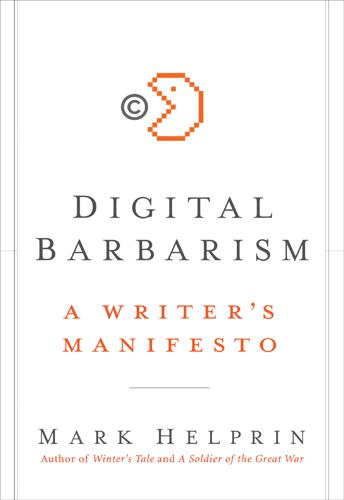
Digital Barbarism: A Writer's Manifesto
by
Mark Helprin
Published 19 Apr 2009
Moving from analog to digital, from the general, unmodulated application of force to its controlled and targeted application—as in precision-guided munitions in contrast to a blind artillery barrage, or in individually targeted advertising in contrast to roadside billboards—we are adjusting the processes of industrialization to bring them more in line with those of the pre-industrial era. This has always been the motivating factor in the design of machines such as the Jacquard loom (which can do what the most skillful weaver can do), or the sewing machine, or the Cuisinart.™ We build mechanisms either to do what we are incapable of doing—flying, communicating across the seas, shattering mountains, lifting 100-foot trees—or to relieve us of what we can do. The machines of the first category have far outperformed those of the second, until now, when we are approaching a kind of critical mass that will usher-in the eventual predominance of mechanization’s new phase.
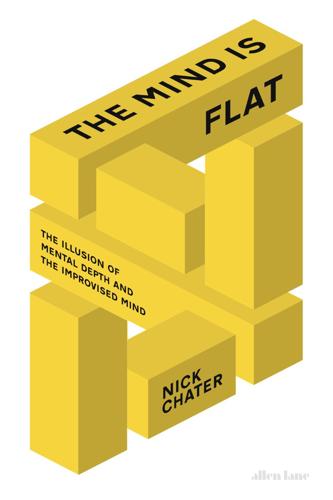
The Mind Is Flat: The Illusion of Mental Depth and the Improvised Mind
by
Nick Chater
Published 28 Mar 2018
It is a continual source of amazement to us that tasks that seemed to require the full power of human ingenuity can be solved, often far more efficiently, by processes of standardization and mechanization: the flexibility and dexterity of human hand-weaving could, in many cases, be replaced by the precision achieved by the hand-loom, and then the steam-driven Jacquard loom, controlled by punched cards around 1800, and on to the phenomenal productivity of the computerized power looms of today. At each step, the environment is made more precise and more standardized; and more of the task can be handed over to machines. In the same way, the rise of digitization and big data can create an ever more frictionless and more precisely defined world in which computers can operate far better than we can.
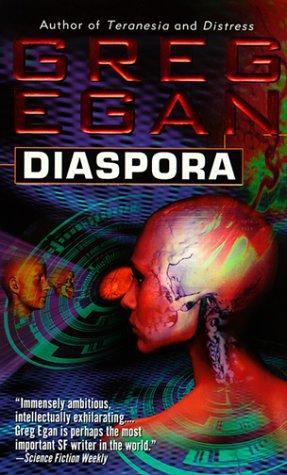
Diaspora
by
Greg Egan
Published 1 Jan 1997
But the womb was a virtual machine designed to execute the seed's instructions, and a dozen more layers of software led down to the polis itself, a lattice of flickering molecular switches. A sequence of bits, a string of passive data, could do nothing, change nothing-but in the womb, the seed's meaning fell into perfect alignment with all the immutable rules of all the levels beneath it. Like a punched card fed into a jacquard loom, it ceased to be an abstract message and became a part of the machine. When the womb read the seed, the seed's first shaper caused the space around it to be filled with a simple pattern of data: a single, frozen numerical wave train, sculpted across the emptiness like a billion perfect ranks of sand dunes.
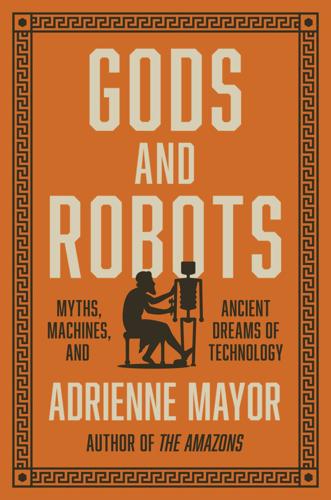
Gods and Robots: Myths, Machines, and Ancient Dreams of Technology
by
Adrienne Mayor
Published 27 Nov 2018
Heron: Woodcroft 1851; Keyser and Irby-Massie 2008, 384–87. Ruffell 2015–16. 41. Working models and explanation of the Heracles-and-dragon mechanism, and the automatic theater, James and Thorpe 1994, 136–38; Kotsanas 2014, 58 and 71–75. Anderson 2012 (the first programmable device is often said to be the Jacquard loom of 1800). Berryman 2009, 30 citing Heron Automata 4.4.4. Huffman 2003, 575. Kang (2011) includes Heron’s works in his third category of actually constructed automata, 16. 42. Ruffell 2015–16; for more 3-D re-creations and explanations of Heron’s self-moving artifices, see the Heron of Alexandria/Automaton Project directed by Ian Ruffell and Francesco Grillo at the University of Glasgow. http://classics.academicblogs.co.uk/heros-automata-first-moves/. 43.
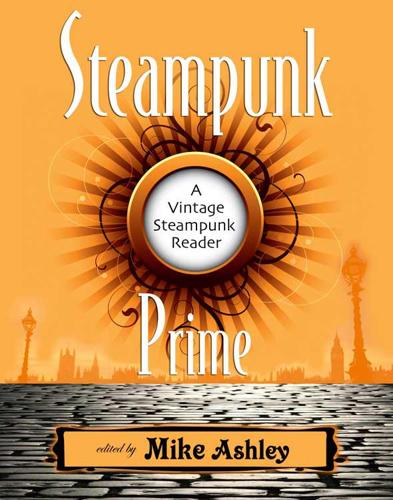
Steampunk Prime: A Vintage Steampunk Reader
by
Mike Ashley
and
Paul Di Filippo
Published 1 Jul 2010
Cast your eye, please” — here Glissman coughed with humility — “on the gigantic switch at your elbow. It is moved by an electrometer, which breaks and closes the current in six hundred places simultaneously, and produces a copper arc seventy feet long.” Then, with a fresh glitter of his peculiar eyes, he pointed out certain leather belts perforated on a definite plan, like a Jacquard loom-card. These belts governed the motor and current controller constantly, with short intervals for return signals. “The engines and dynamo.” He said. “If worked continuously, couldn’t give more than five thousand horse-power. But we do not take electricity from the machine more than one-hundredth of the time.
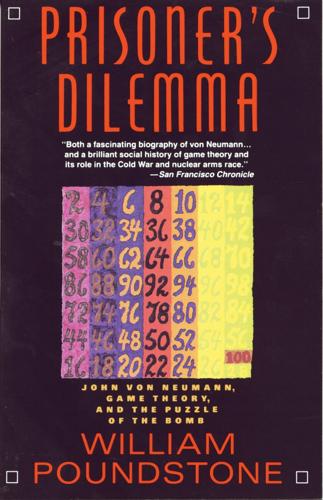
Prisoner's Dilemma: John Von Neumann, Game Theory, and the Puzzle of the Bomb
by
William Poundstone
Published 2 Jan 1993
Dinner-table discussions with his children often touched on the social responsibilities of bankers. He tried to interest his sons in banking by bringing home mementos of the businesses his firm was backing. Von Neumann’s brother Nicholas speculated that Johnny’s idea for computer punched cards was inspired by the family’s discussion of the Jacquard loom factory that Max’s bank financed. In 1913 Max purchased a margittai title of nobility, which the cash-strapped Emperor Franz Joseph was then retailing to the rising capitalist class. Many changed their names upon receiving the title, but Max did not except to prefix the title: “margittai Neumann.”
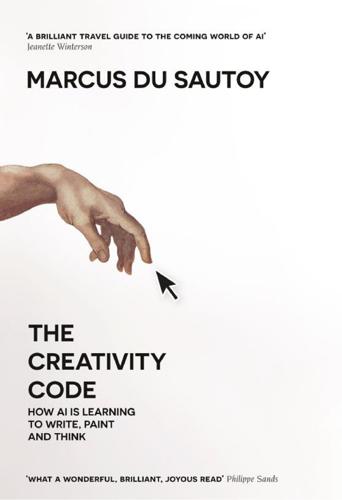
The Creativity Code: How AI Is Learning to Write, Paint and Think
by
Marcus Du Sautoy
Published 7 Mar 2019
The crazy thing is that the tools DeepMind is using to create the programs that might put me out of a job are precisely the ones that mathematicians have created over the centuries. Is this mathematical Frankenstein’s monster about to turn on its creator? 4 ALGORITHMS, THE SECRET TO MODERN LIFE The Analytical Engine weaves algebraic patterns, just as the Jacquard loom weaves flowers and leaves. Ada Lovelace Our lives are completely run by algorithms. Every time we search for something on the internet, plan a journey with our GPS, choose a movie recommended by Netflix or pick a date online, we are being guided by an algorithm. Algorithms are steering us through the digital age, yet few people realise that they predate the computer by thousands of years and go to the heart of what mathematics is all about.

How Not to Network a Nation: The Uneasy History of the Soviet Internet (Information Policy)
by
Benjamin Peters
Published 2 Jun 2016
For example, this work, an interdisciplinary exercise in the emerging field of network studies, seeks to articulate a fluid discourse around the central term network. The term network, like other keywords in digital discourse, packs more meaning than is usually seen and has roots in the textile industry of lacework, like the Jacquard loom behind computer programming techniques (there may be more silk than silicon to the information age). The Russian term set’ maps fairly well onto my three English uses of the term network—(1) a technical communication network understood as interlinked digital, electronic, telephonic, or other channels of communication; (2) the complex sociotechnical assemblage of heterogeneous relations that link people, institutions, and the administration of markets, states, and other actors in everyday life; and (3) an abstract organizational mode that maps the linkages between any set of objects, such as graph theory in mathematics.23 Although all of these meanings are in play here, what we assume to be a relatively settled term today behind the concept of network (set’) took up in Soviet discussions an even wider set of terms such as base, complex, cluster, and most characteristically for computers connected over distances, system.
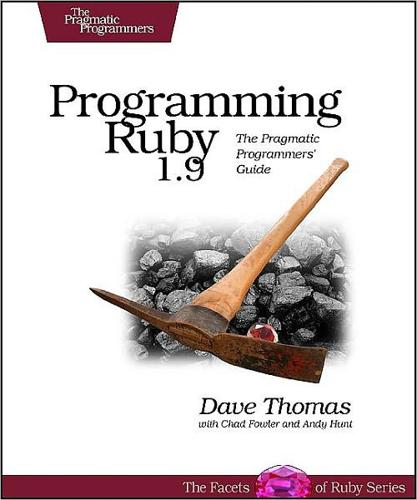
Programming Ruby 1.9: The Pragmatic Programmer's Guide
by
Dave Thomas
,
Chad Fowler
and
Andy Hunt
Published 15 Dec 2000
Try to determine what could go wrong if you were expecting a String and instead get an Array. Sometimes, the difference is crucially important. Often, though, it isn’t. Try erring on the more permissive side for a while, and see whether bad things happen. If not, perhaps duck typing isn’t just for the birds. Report erratum Chapter 24 Metaprogramming The Jacquard loom, invented more than 200 years ago, was the first device controlled using punched cards—rows of holes in each card were used to control the pattern woven into the cloth. But imagine if instead of churning out fabric, the loom could punch more cards, and those cards could be fed back into the mechanism.
…
method class Object 627 isatty method class IO 557 isdst method class Time 718 ISO 8601 date 819 ISO-8851 see Encoding issetugid method module Process::Sys 653 Iterator 46, 74, 77, 161 in extension 870 external, internal 80 for reading files 179 see also Block iterator? method module Kernel 571 J j method 765 Jacquard loom 384 JavaScript Object Notation see JSON JavaSpaces see Distributed Ruby jcode library 727 JINI see Distributed Ruby JIS 761, 780 join method class Array 455 class File 511 class Thread 188, 708 JRuby 864 JSON class 765 JSP see erb Jukebox example 845–852 Report erratum 915 K ANJI K Kanji 780 Kellner, Robert 817 Kernel class block_given?
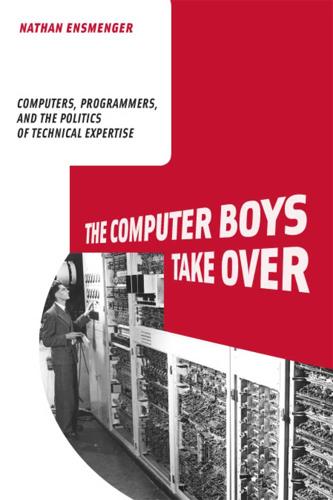
The Computer Boys Take Over: Computers, Programmers, and the Politics of Technical Expertise
by
Nathan L. Ensmenger
Published 31 Jul 2010
And this is what brings us back to the centrality of software to the history of computing: it was not so much the original invention of the electronic computer that launched the computer revolution but the later discovery that such computers could be made programmable. To be sure, prior to the electronic computer there were machines that could be controlled automatically. A Jacquard loom, for instance, used a series of steel cards, as many as twenty thousand at a time, to control the weaving of patterns on fabric.15 Tabulating machines could also be programmed to a certain degree by rewiring their components. But the combination of speed and flexibility provided by the combination of an electronic digital computer and well-designed software was unprecedented.

Arriving Today: From Factory to Front Door -- Why Everything Has Changed About How and What We Buy
by
Christopher Mims
Published 13 Sep 2021
De-skilling is what makes it possible for Amazon to continue to function despite relatively high rates of turnover. It’s also what makes it possible for the company to hire hundreds of thousands of seasonal employees every year and, whatever their background, turn them into productive associates within a day or two. The spinning jenny, Jacquard loom, and numerical machine tool, all milestones in the industrialization of manufacturing, took knowledge that used to be in the heads of skilled craftspeople and embodied it in a machine that made them redundant. Today, automation does this and more: it makes possible things that no human could accomplish without it.
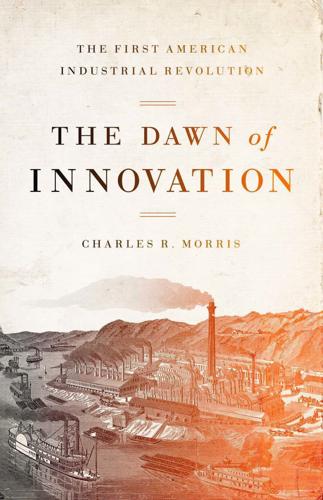
The Dawn of Innovation: The First American Industrial Revolution
by
Charles R. Morris
Published 1 Jan 2012
Babbage’s projects appear to be so indefinitely expensive, the ultimate success so problematical, and the ultimate expenditure so large and so utterly incapable of being calculated, that the government would not be justified in taking upon itself any further liability.”28 For Babbage, the cold rejection of his new plan was a serious blow that embittered much of his later life. He continued to produce books and articles on an array of subjects, wistfully tinkering with the design of the analytical engine until his death in 1871. But the design is still an intellectual monument. Babbage’s inspiration was from the Jacquard loom, which used punch cards to signify any pattern of threads whatsoever. Experts rendered patterns in sequences of punch cards. The textile mill then created additional sequences of cards to specify the thread colors for the pattern. The Analytical Engine similarly had two main components, the mill and the store.
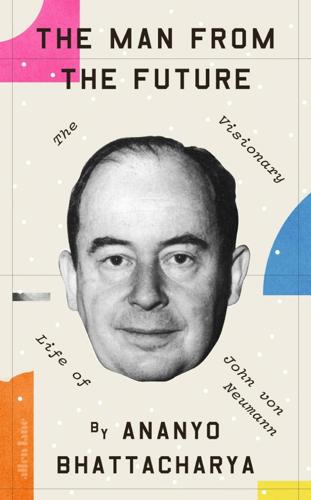
The Man From the Future: The Visionary Life of John Von Neumann
by
Ananyo Bhattacharya
Published 6 Oct 2021
Von Neumann was among several early computer pioneers to be inspired by this ingenious mechanism, which allowed fabrics with complex patterns to be mass-produced for the first time. Like the loom, the Analytical Engine, a mechanical computer designed in the 1830s by the English polymath Charles Babbage, was to be programmed with strings of punched cards. ‘We may say most aptly that the Analytical Engine weaves algebraic patterns just as the Jacquard loom weaves flowers and leaves,’ wrote Babbage’s collaborator, the mathematician Countess Ada Lovelace. Sadly, Babbage never managed to raise the sizeable sum he needed to build the machine. Jacquard’s place in the history of computing was assured by his loom’s influence on Herman Hollerith, an enterprising civil servant who worked for the United States Census Bureau.

These Strange New Minds: How AI Learned to Talk and What It Means
by
Christopher Summerfield
Published 11 Mar 2025
Seeing the world anew through this materialist lens, philosophers began to consider that thinking itself might be a physical process, and tried to transcribe the language in which it occurred. By the mid-nineteenth century, machines began to proliferate as the industrial revolution kicked into gear, raising the question of whether a reasoning machine could be built from nuts and bolts, like the steam engine, the typewriter or the Jacquard loom (a mechanical device for automating textile production that worked using punch cards, like early computers). In the twentieth century, electronic technologies blossomed, and the first computer scientists dared to imagine machines with brains more powerful than our own. If we could make sense of our human mental machinery, then could we not build an artificial mind so smart it would make Aristotle look like Homer Simpson?
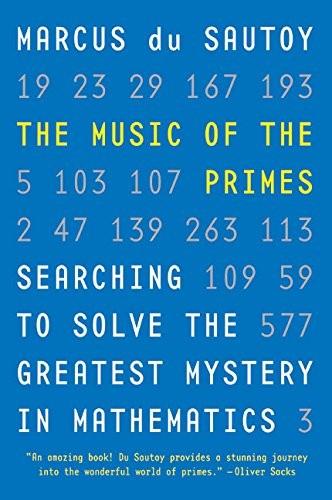
The Music of the Primes
by
Marcus Du Sautoy
Published 26 Apr 2004
It was the poet Lord Byron’s daughter, Ada Lovelace, who recognised the enormous programming potential of Babbage’s machine. While translating into French a copy of Babbage’s paper describing the machine, she couldn’t resist adding some extra notes to extol the machine’s capability. ‘We may say most aptly that the Analytical Engine weaves Algebraic patterns, just as the Jacquard loom weaves flowers and leaves.’ Her notes included many different programs that could be implemented on Babbage’s new machine, even though the machine was purely theoretical and had never been built. By the time she had finished the translation, her additions had become so out of hand that the French version was three times the length of the English edition.

The Pursuit of Power: Europe, 1815-1914
by
Richard J. Evans
Published 31 Aug 2016
Although Louis-Philippe retained the right to appoint ministers, he was always careful to do so only if they had the support of the legislature. Fresh elections in 1830 brought a liberal majority. But at the same time, the new regime was in some ways as committed to the maintenance of order as the old one had been. In Lyon, where the silk industry employed 50,000 people, the introduction of Jacquard looms and the dismissal, at the behest of local manufacturers and merchants, of a prefect who had guaranteed minimum prices for the weavers’ products, led to a mass insurrection in 1831. Armed bands of weavers stormed the police barracks, routed the military garrison in a battle that left 169 dead and more than 400 wounded, and took over the town.
…
Mechanization drastically lowered prices while producing a better-quality, finer and more even yarn, though where labour costs were low, as for example in Germany, the expensive self-acting mules were not adopted until the late 1850s. Technological innovation also took place on the Continent. The French Jacquard loom, for example, invented in the late eighteenth century, revolutionized silk weaving and had an application to fancy cotton products as well; the number of looms in Lyon doubled between 1788 and 1833, by which time two-thirds of them were Jacquard models. And one of the most significant innovations in textiles came in 1845 when the Alsatian engineer Josué Heilmann (1796–1848), in Mulhouse, invented a machine that could be used for worsted wool yarn as well as fine cotton.

The Age of Spiritual Machines: When Computers Exceed Human Intelligence
by
Ray Kurzweil
Published 31 Dec 1998
For a concise history of the development of the Mark I, see Augarten’s Bit by Bit, 103-107. I. Bernard Cohen provides a new perspective on Aiken’s relation to Babbage in his article “Babbage and Aiken,” Annals of the History of Computing 10 (1988): 171-193. 4 The idea of the punched card, which Babbage borrowed from the Jacquard looms (automatic weaving machines controlled by punched metal cards), also survived and formed the basis for automating the increasingly popular calculators of the nineteenth century. This culminated in the 1890 U.S. census, which was the first time that electricity was used for a major data-processing project.

An Empire of Wealth: Rise of American Economy Power 1607-2000
by
John Steele Gordon
Published 12 Oct 2009
As governments and businesses grew in size and came to rely on ever more statistics, the need to speed up the processing of data became acute. The 1880 United States census, tabulated by hand, required seven years of mind-numbing work to complete. To help with the next census, a young mining engineer and statistician named Herman Hollerith devised a solution based in part on the eighteenth-century Jacquard loom, which had allowed the machine weaving of complicated cloth patterns. Hollerith’s device used punch cards with holes. When a needle passed through a hole, it completed an electrical circuit by dipping into a tiny cup of mercury, and a counter ticked upward. Hollerith’s device was able to tabulate the data on punch cards at the rate of a thousand cards an hour, and the sixty-two million cards generated by the 1890 census were processed in only six months.
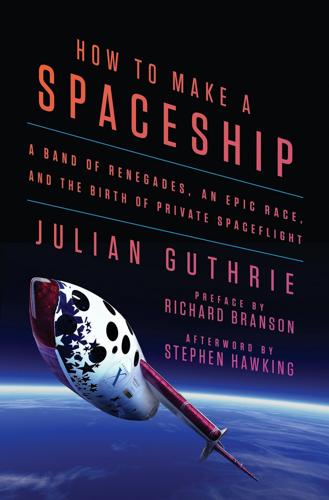
How to Make a Spaceship: A Band of Renegades, an Epic Race, and the Birth of Private Spaceflight
by
Julian Guthrie
Published 19 Sep 2016
They learned electronics by building Heathkits, making small transistor radios with resistors, capacitors, diodes, transistors, a rheostat, and a small loudspeaker. Their classmate Jon Lynn was the first in their group to build a working computer, the Sol-20 by Processor Technology, similar to the early Altair. Their first “computers” relied on punch cards for programming, based on the same mechanical principle as the Jacquard loom, with the punch-card reader converting the perforations into on/off electrical signals, which the computer interpreted as numbers and instruction codes for the calculation. Carrying the punch cards around school was like being a part of a secret fraternity. After school, the boys hung out at the Gold Coast video arcade, playing Pong, Tank, and Speed Race.

The Rough Guide to France (Travel Guide eBook)
by
Rough Guides
Published 1 Aug 2019
Soierie Vivante 21 rue Richan • Tues 1.30–6pm, Wed–Sat 9am–noon & 1.30–6pm; guided tours 2pm & 4pm • €7 • 04 78 27 17 13, soierie-vivante.asso.fr • Croix-Rousse One of the few remaining silk-worker’s ateliers in Lyon is the former trimming workshop of one Madame Létourneau, now run by Soierie Vivante (Living Silk Association). A tour of the workshop includes a demonstration of the three beautiful Jacquard looms dating from 1870, the only ones of this type still functioning in Lyon. If you can’t make it along for a demonstration, you can still have a nose around, and there’s also a giftshop selling some lovely silk wares. Vieux Lyon Reached by one of the three passerelles (footbridges) crossing the Saône from Terreaux and the Presqu’île, Vieux Lyon is made up of the three villages of St-Jean, St-Georges and St-Paul at the base of the hill overlooking the Presqu’île.
…
South of place St-Paul, the cobbled streets of Vieux Lyon, pressed close together beneath the hill of Fourvière, form a backdrop of Renaissance and medieval facades, bright night-time illumination and a swelling chorus of well-dressed Lyonnais in search of supper or a midday splurge. Musée Gadagne 1 place du Petit-Collège • Wed–Sun 10.30am–6.30pm • €6 each or €8 for both museums, including audioguide • 04 78 42 03 61, gadagne.musees.lyon.fr The silk strike of 1831 Though the introduction of the Jacquard loom of 1804 made it possible for one person to produce 25cm of silk in a day instead of taking four people four days, silk workers, or canuts – whether masters or apprentices, and especially women and child workers – were badly paid whatever their output. As the price paid for a length of silk fell by over fifty percent, attempts to regulate the price were ignored by the dealers, even though hundreds of skilled workers were languishing in debtors’ jails.
…
The first of these documents the city’s affinity with two wheels, from the manufacture of the first French bicycle here in 1886 through to the industry’s development in a sporting context, not least of course the Tour de France; there are over 350 vélocipèdes on display. The exhibition on weaponry documents the gunsmithing industry in St-Étienne, alongside an impressive assemblage of arms and armour, while Textiles concentrates on the development of the revolutionary Jacquard loom alongside an exquisite collection of ribbons and silks. ARRIVAL AND INFORMATION ST-ÉTIENNE By train The main gare is at Châteaucreux in the business quarter, 10min away from the centre by tram. However there are four more stations in St-Étienne depending on the direction of the destinations.
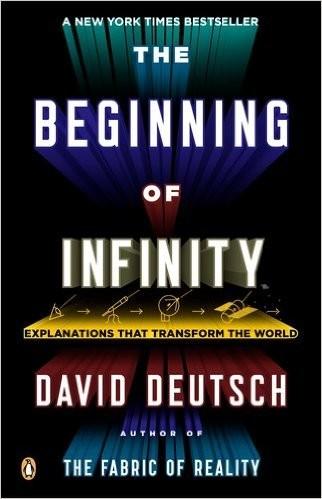
The Beginning of Infinity: Explanations That Transform the World
by
David Deutsch
Published 30 Jun 2011
Here we see a transition that is typical of the jump to universality: before the jump, one has to make specialized objects for each document to be printed; after the jump, one customizes (or specializes, or programs) a universal object – in this case a printing press with movable type. Similarly, in 1801 Joseph Marie Jacquard invented a general-purpose silk-weaving machine now known as the Jacquard loom. Instead of having to control manually each row of stitches in each individual bolt of patterned silk, one could program an arbitrary pattern on punched cards which would instruct the machine to weave that pattern any number of times. The most momentous such technology is that of computers, on which an increasing proportion of all technology now depends, and which also has deep theoretical and philosophical significance.

Turing's Cathedral
by
George Dyson
Published 6 Mar 2012
If the pressure came out higher, that meant there was more energy released. Complete transformation! They began to invent ways of doing it better. They improved the scheme. They worked at night.”65 Productivity went up by a factor of ten. Von Neumann found himself back among the punched cards he remembered from when his father brought parts of a Jacquard loom–control system home from work. “In March or April 1944,” says Metropolis, “von Neumann spent two weeks working in the punched-card-machine operation, pushing cards through the various machines, learning how to wire plugboards and design card layouts, and becoming thoroughly familiar with the machine operations.”66 There were fewer than two years from the first, tentative theoretical models to the successful test, code-named Trinity, of an implosion weapon at the northern extremity of the Alamogordo Bombing Range on July 16, 1945.
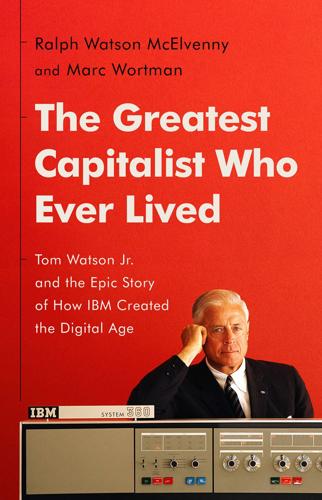
The Greatest Capitalist Who Ever Lived: Tom Watson Jr. And the Epic Story of How IBM Created the Digital Age
by
Ralph Watson McElvenny
and
Marc Wortman
Published 14 Oct 2023
The punched-card tabulator grew out of a need to improve a basic government function, the population census. In the 1880s the German American engineer Herman Hollerith, at the time a statistician employed by the US Census Office (later the Census Bureau), invented the eponymous machine. For his invention, he drew on the player piano roll and the Jacquard loom concepts in which holes punched into cards corresponded to preset patterns, a sort of rudimentary form of software, which a piano used to play songs or a loom “read” to weave textile patterns automatically.24 The tabulator operator used a keyboard to punch out holes at designated positions on a card.
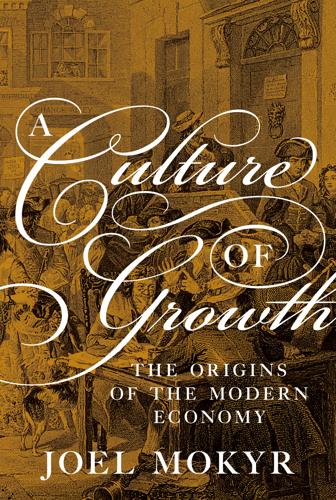
A Culture of Growth: The Origins of the Modern Economy
by
Joel Mokyr
Published 8 Jan 2016
As argued by Tuschman (2014), personalities may be hard wired for shifts over the life cycle and changes in gene expression may alter openness to new ideas, conscientiousness, and other traits. 7 The term “hopeful monstrosity” was coined by the evolutionary biologist Richard Goldsmith (1940) in his now largely discredited view that evolution could at times advance by discrete quantum leaps in which altogether new species emerged quite suddenly. 8 In Mokyr (1991), I provide five examples of such macroinventions during the Industrial Revolution: gaslighting, the breast wheel, the Jacquard loom, chlorine bleaching, and hot-air ballooning. 9 For a similar argument, with a slightly different emphasis, see Mesoudi et al (2013). 10 A good example can once again be found in the history of technology. In Mokyr (2002), I distinguish between propositional and prescriptive knowledge, the former roughly corresponding to a genotype, the latter to an observable technique.

Artificial Intelligence: A Modern Approach
by
Stuart Russell
and
Peter Norvig
Published 14 Jul 2019
In the 3rd century BCE an actual humanoid robot called the Servant of Philon could pour wine or water into a cup; a series of valves cut off the flow at the right time. Wonderful automata were built in the 18th century—Jacques Vaucanson’s mechanical duck from 1738 being one early example—but the complex behaviors they exhibited were entirely fixed in advance. Possibly the earliest example of a programmable robot-like device was the Jacquard loom (1805), described on page 33. Grey Walter’s “turtle,” built in 1948, could be considered the first autonomous mobile robot, although its control system was not programmable. The “Hopkins Beast,” built in 1960 at Johns Hopkins University, was much more sophisticated; it had sonar and photocell sensors, pattern-recognition hardware, and could recognize the cover plate of a standard AC power outlet.
…
Z., 903, 1100 Ingham, M., 267, 1116 inheritance, 335, 347 multiple, 348 initial state, 83, 86, 123, 193, 363 initial state model, 482 input gate (in LSTM), 826 input resolution, 326 inside–outside algorithm, 891 instance (of a schema), 135 instance-based learning, 704, 704–706 instant runoff voting, 630 insurance premium, 525 integrated information theory, 1058 intelligence, 19, 54 intelligence augmentation, 32 intelligent backtracking, 179–181, 252 interior-point method, 161 interleaved execution, 592 interleaving, 152, 178, 398 internal state, 69 International Joint Conference on AI (IJUCAI), 53, 127 interpolation (of data), 686 interpolation smoothing, 902 interpretability, 729, 737 interpretation, 276, 295 extended, 279, 295 intended, 276 interval, 342–343 Intille, S., 516, 1100 intractability, 39 intrinsic property, 340 introspection, 20, 31 invariance, temporal, 811 inverse (of a matrix), 1077 inverse dynamics, 958 inverse kinematics, 947 inverse reinforcement learning, 864, 1054, 1065 inverted pendulum, 867 Ioffe, S., 837, 1100 IPL (programming language), 36 IQ test, 38 IR (information retrieval), 901, 905 Irpan, A., 835, 871, 985, 1088, 1100 irrationality, 19, 521, 550 irreversible action, 154, 850 Irving, G., 330, 1085, 1104 IS-A links, 359 Isard, M., 516, 1100 Isbell, C., 359, 1065, 1104 ISBN, 648 Isele, R., 357, 1103 ISIS (planning system), 401 Islam, R., 871, 1095 Isola, R, 930, 1021, 1022, 1100, 1118 iterated best response, 600 iterated game, 604 ITERATIVE-DEEPENING-SEARCH, 99 iterative deepening search, 98, 98–100, 123, 125, 201, 204, 376 iterative expansion, 126 iterative LQR (ILQR), 962, 982, 985 Ivanov, V., 1043, 1088 Iwasawa, S., 1057, 1109 iWeb (language corupus), 876 IxTeT (planning system), 401 Iyyer, M., 930, 1109 J Jaakkola, T., 476, 838, 1100, 1111 Jabbari, S., 1060, 1087 JACK (bridge program), 224 Jackei, L., 44, 837, 1029, 1103 Jackson, C., 666, 798, 1105 Jacobi, C. G., 667 Jacobs, D., 1014, 1101 Jacobson, D. H., 985, 1100 Jacquard, J., 33 Jacquard loom, 33 Jaderberg, M., 48, 225, 838, 1100 Jaffar, J., 330, 1100 Jaggi, M., 838, 1117 Jaguar, 401 Jain, A., 48, 905, 923, 1104, 1108, 1115 Jain, B., 873, 1111 Jain, D., 666, 1100 Jaitly, N., 900, 905, 1090, 1099 Jakob, M., 357, 1103 James, G., 738, 1100 James, W., 31 janitorial science, 57 Jankowiak, M., 667, 1087 Janz, D., 737, 1113 Janzing, D., 476, 1109 Japan, 41, 983 Jarrett, K., 837, 1100 Jasra, A., 517, 1093 Jastrzebski, S., 734, 1086 Jaumard, B., 266, 1098 Jauvin, C., 929, 1087 Jaynes, E.
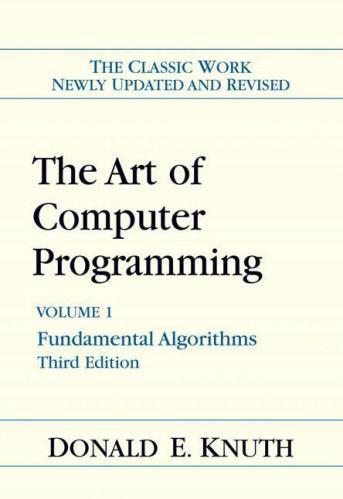
The Art of Computer Programming: Fundamental Algorithms
by
Donald E. Knuth
Published 1 Jan 1974
Hopper wrote a subroutine for computing sin x on the Harvard Mark I calculator [see Mechanization of Thought Processes (London: Nat. Phys. Lab., 1959), 164]. However, these were essentially "open subroutines," meant to be inserted into a program where needed instead of being linked up dynamically. Babbage's planned machine was controlled by sequences of punched cards, as on the Jacquard loom; the Mark I was controlled by a number of paper tapes. Thus they were quite different from today's stored- program computers. Subroutine linkage appropriate to stored-program machines, with the return address supplied as a parameter, was discussed by Herman H. Goldstine and John von Neumann in their widely circulated monograph on programming, written during 1946 and 1947; see von Neumann's Collected Works 5 (New York: Macmillan, 1963), 215-235.

Lonely Planet Ireland
by
Lonely Planet
The 'Flax to Fabric' exhibition has plenty of audiovisual and hands-on exhibits, and outlines the fascinating history of the linen industry in the 18th and 19th centuries – on the eve of WWI, Ulster was the largest linen-producing region in the world, employing some 75,000 people. You can watch weavers working on Jacquard looms and try your hand at spinning flax. Hilden BreweryBREWERY ( GOOGLE MAP ; %028-9266 0800; www.hildenbrewery.com; Hilden House, Grand St; tour £10; htours by reservation noon Wed-Fri) Ireland's oldest independent brewing company, dating from 1981, produces superior brews including caramel-malt Twisted Hop, Buck's Head double IPA, Barney's Brew wheat beer with coriander and golden Belfast Blonde pale ale.

Ireland (Lonely Planet, 9th Edition)
by
Fionn Davenport
Published 15 Jan 2010
The museum on the ground floor has displays on the cultural and historic heritage of the region, while upstairs the award-winning ‘Flax to Fabric’ exhibition details the fascinating history of the linen industry in Northern Ireland – on the eve of WWI Ulster was the largest linen-producing region in the world, employing some 75,000 people. There are plenty of audiovisual and hands-on exhibits – you can watch weavers working on Jacquard looms and even try your hand at spinning flax. Buses 523, 530 and 532 from Belfast’s Upper Queen St go to Lisburn (£2.60, 40 minutes, half-hourly Monday to Friday, hourly Saturday and Sunday), or catch the train (£3.50, 30 minutes, at least half-hourly Monday to Saturday, hourly Sunday) from either Belfast Central or Great Victoria St Stations.

France (Lonely Planet, 8th Edition)
by
Nicola Williams
Published 14 Oct 2010
Famed for its bohemian inhabitants and lush outdoor food market, it is historically known for its silk-weaving tradition, illustrated by the Mur des Canuts (off Map; cnr bd des Canuts & rue Denfert Rochereau, 4e; Hénon), a fresco painted on the side of an apartment block. Following the introduction of the mechanical Jacquard loom in 1805, Lyonnais canuts (silk-weavers) built workshops in this quarter with large windows to let in light and hefty wood-beamed ceilings more than 4m high to accommodate the huge new machines. These workshops are chic loft apartments today. * * * LYON’S MOST EXCITING URBAN SPACE … is the Lyon Confluence (www.lyon-confluence.fr), the spot where the Rhône and the Saône meet south of Gare de Perrache.

Lonely Planet France
by
Lonely Planet Publications
Published 31 Mar 2013
Buy it online (www.en.lyon-france.com/Lyon-City-Card), from the tourist office, or at some hotels. CROIX ROUSSE Independent until it became part of Lyon in 1852, and retaining its own distinct character with its bohemian inhabitants and lush outdoor food market, the hilltop quarter of Croix Rousse slinks north up the steep pentes (slopes). Following the introduction of the mechanical Jacquard loom in 1805, Lyonnais canuts (silk weavers) built tens of thousands of workshops in the area, with large windows to let in light and hefty wood-beamed ceilings more than 4m high to accommodate the huge new machines. Weavers spent 14 to 20 hours a day hunched over their looms breathing in silk dust.